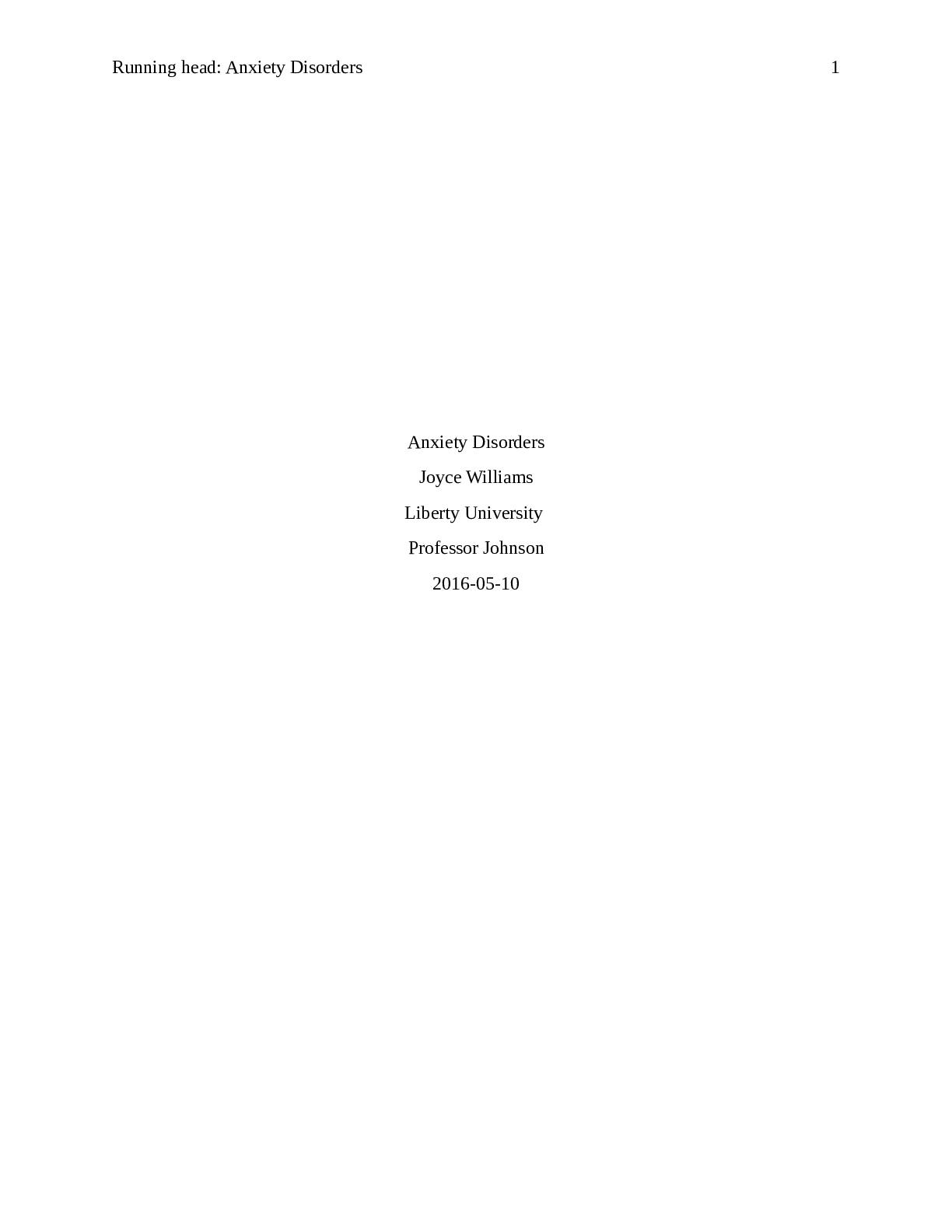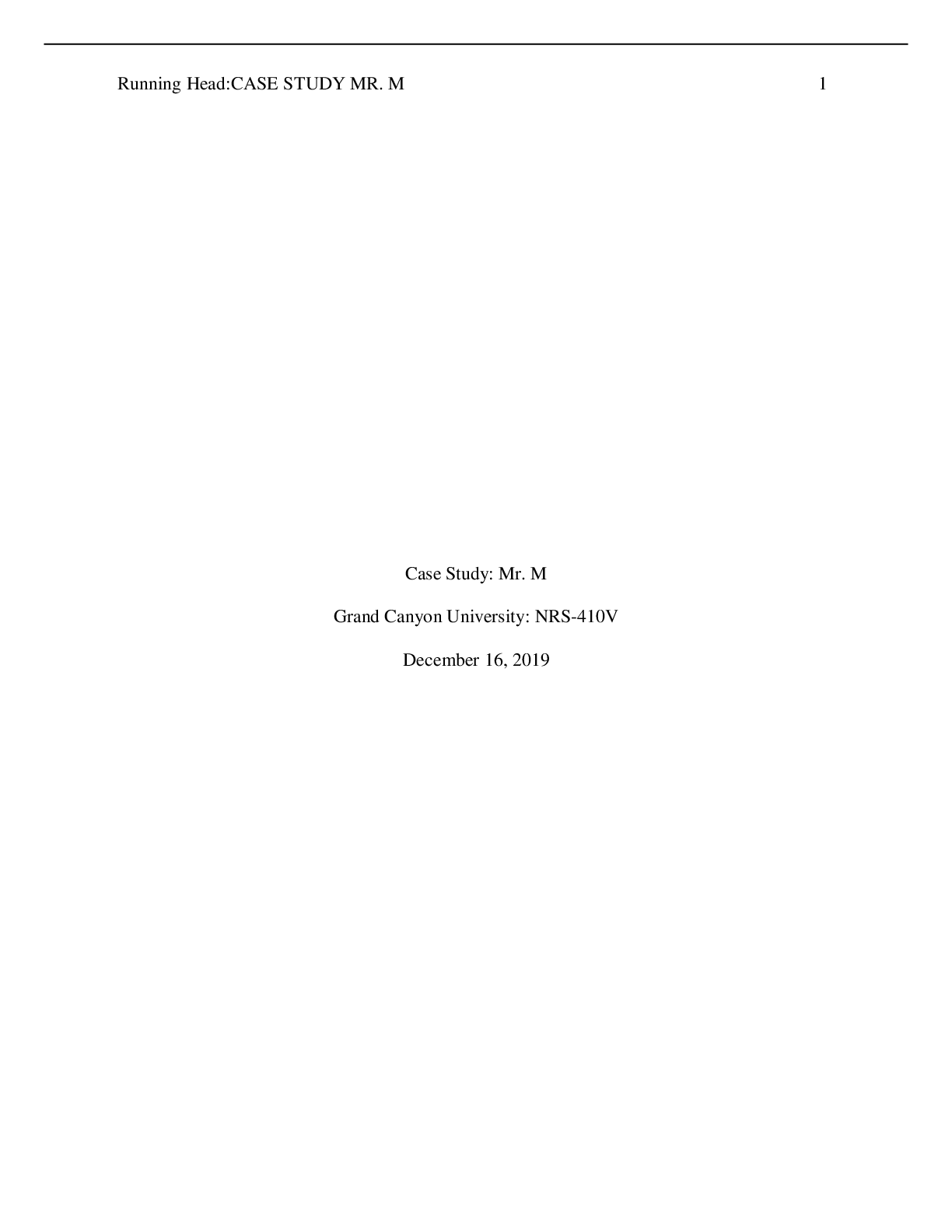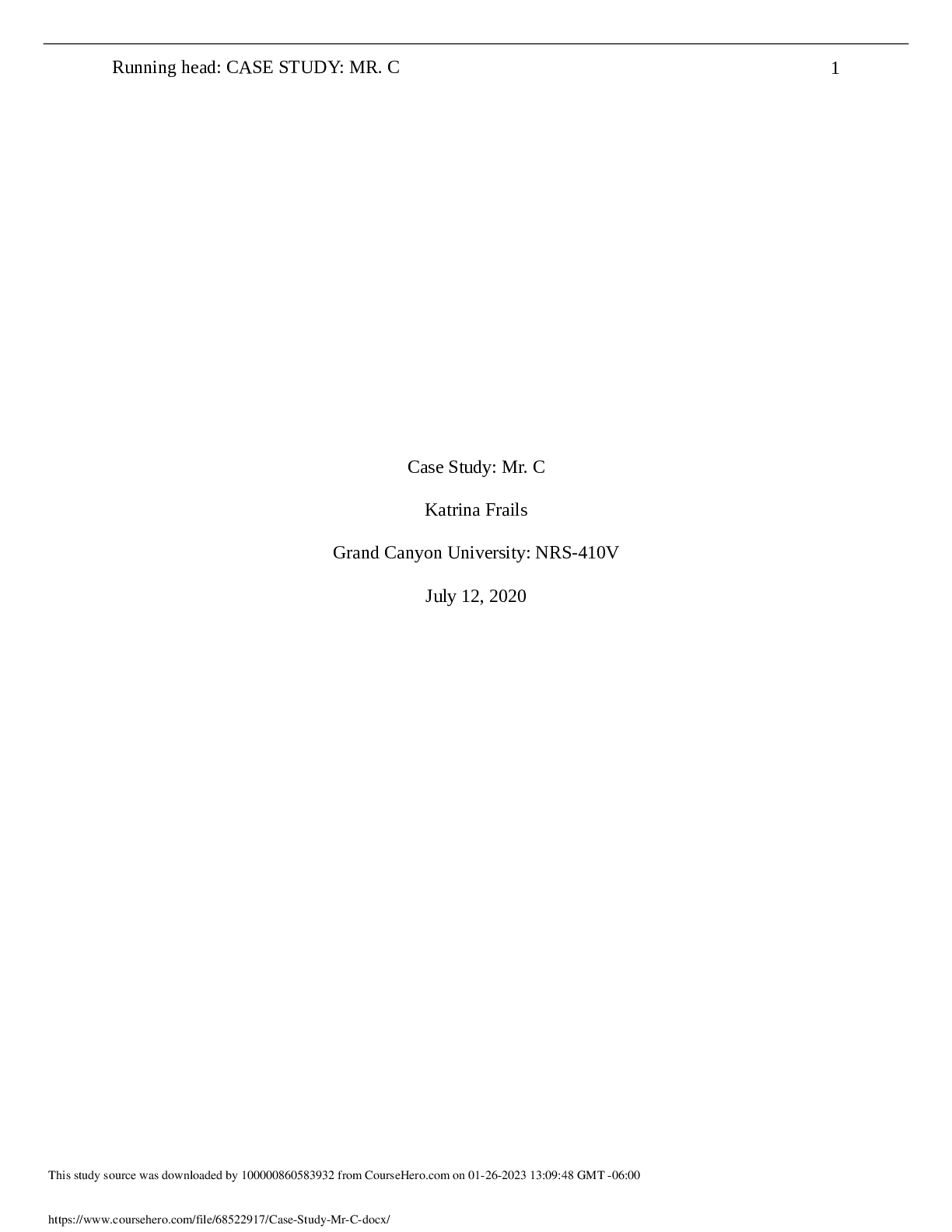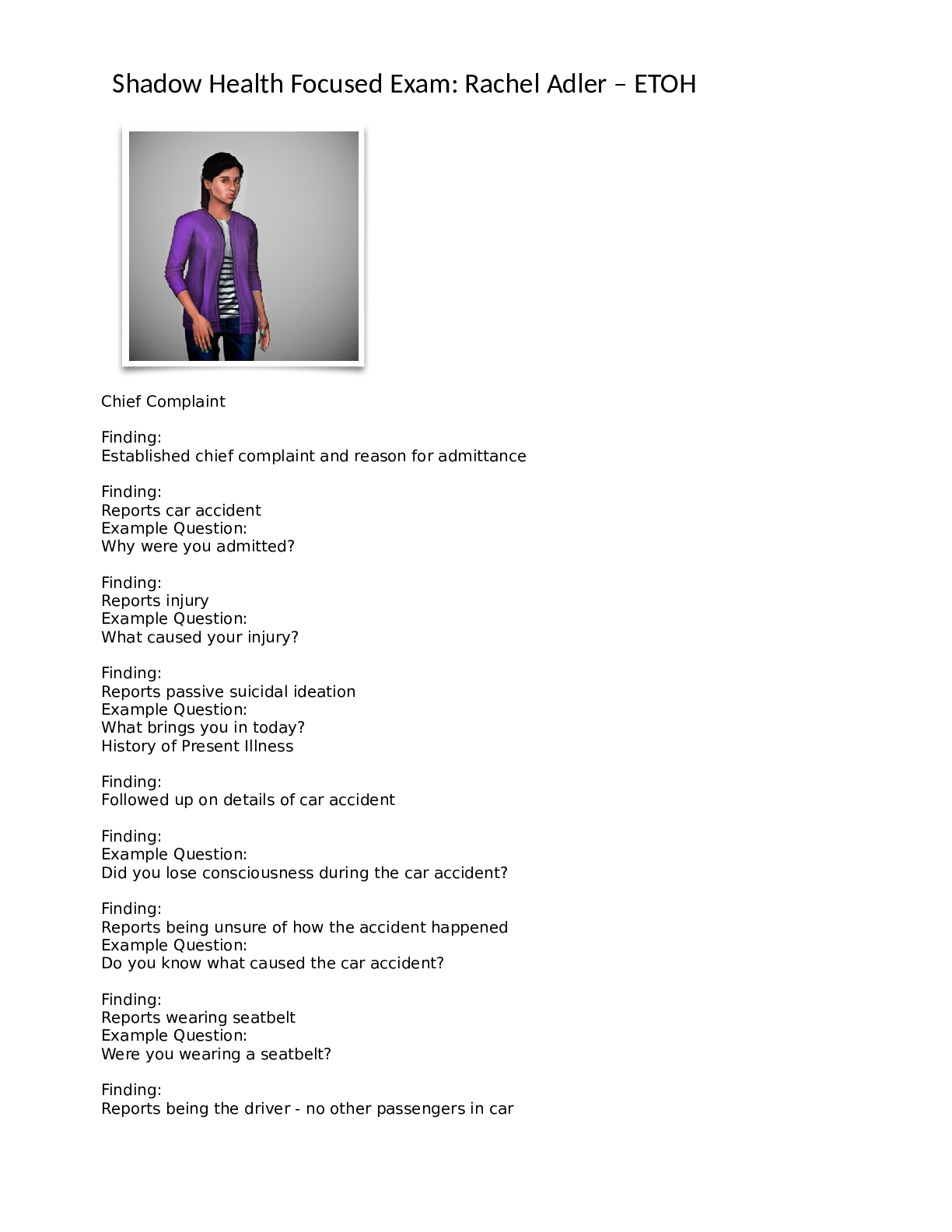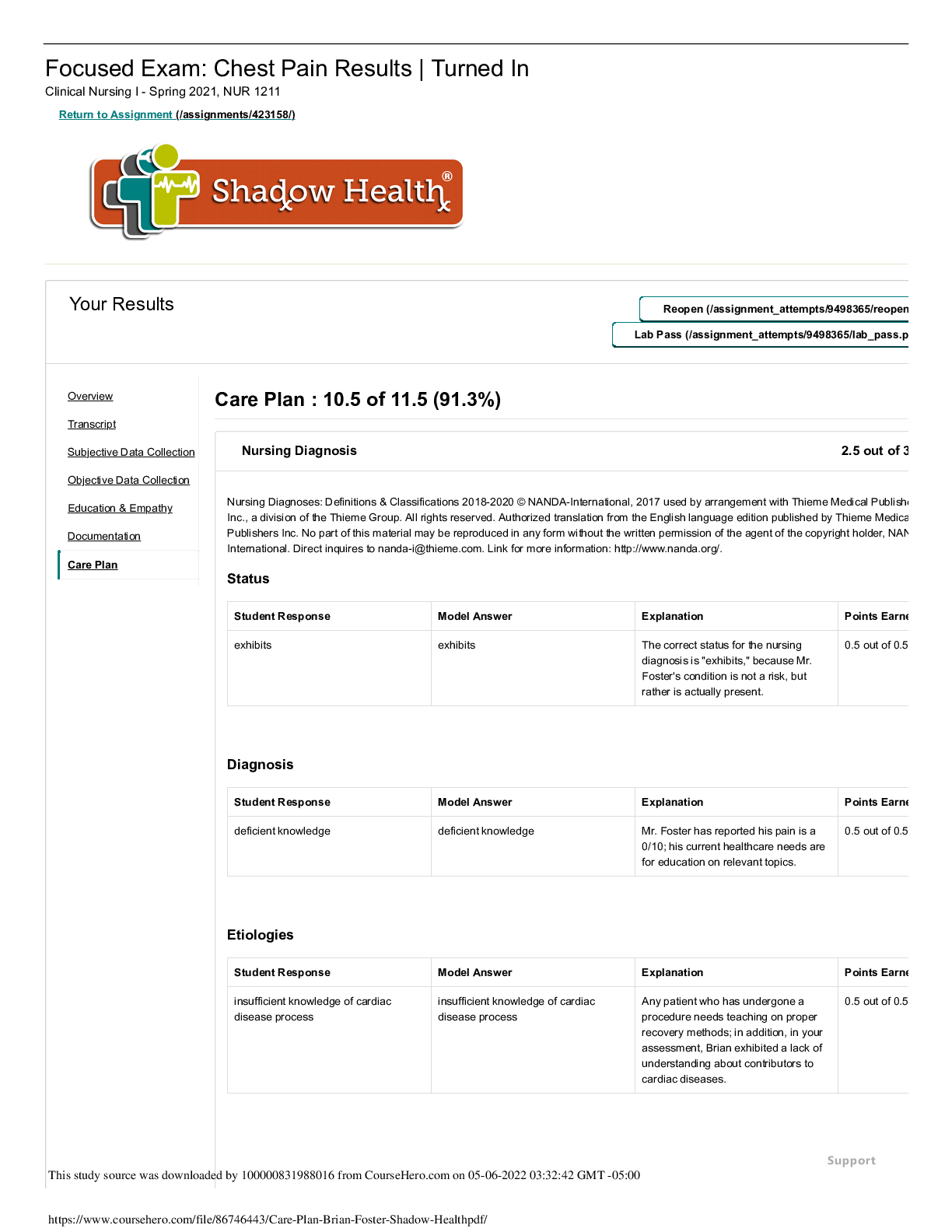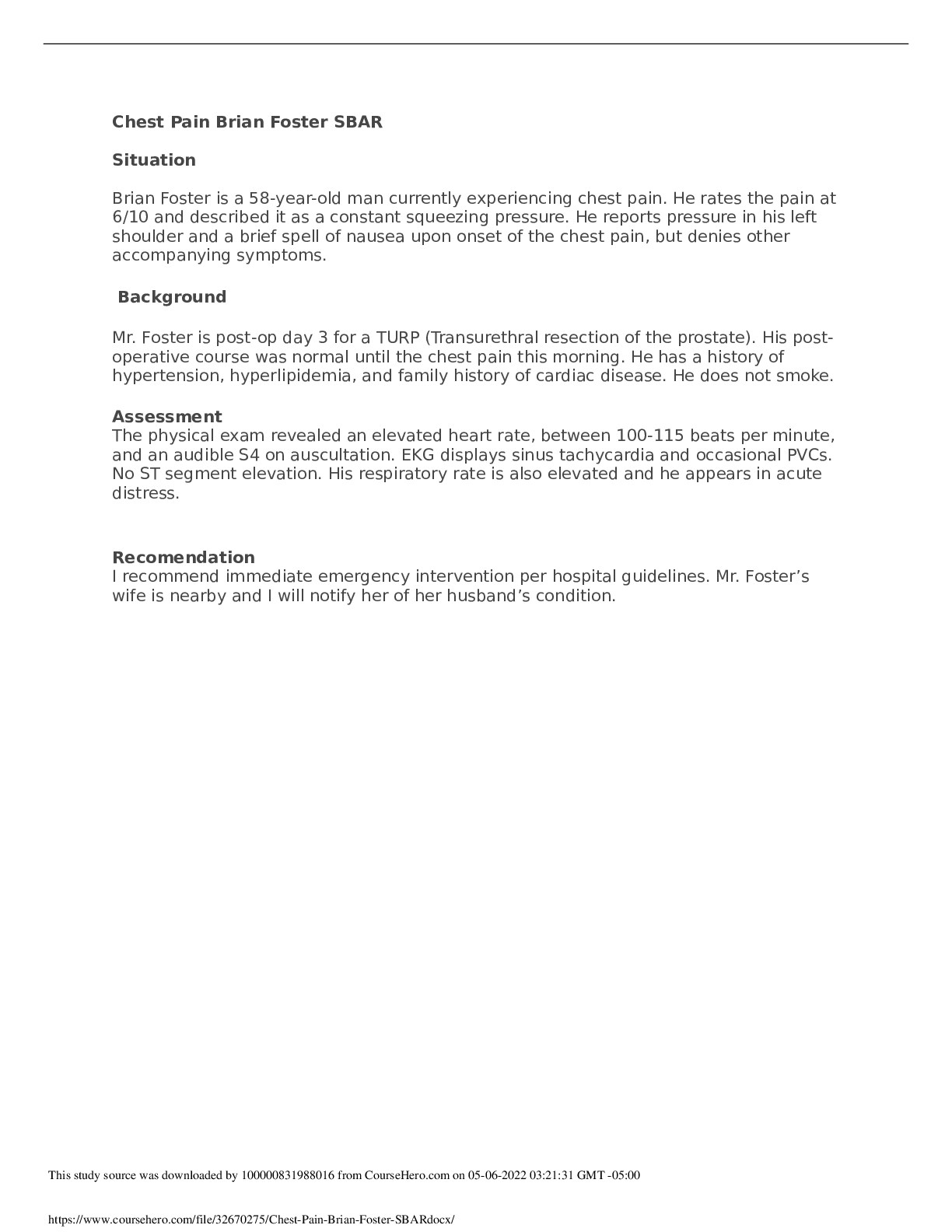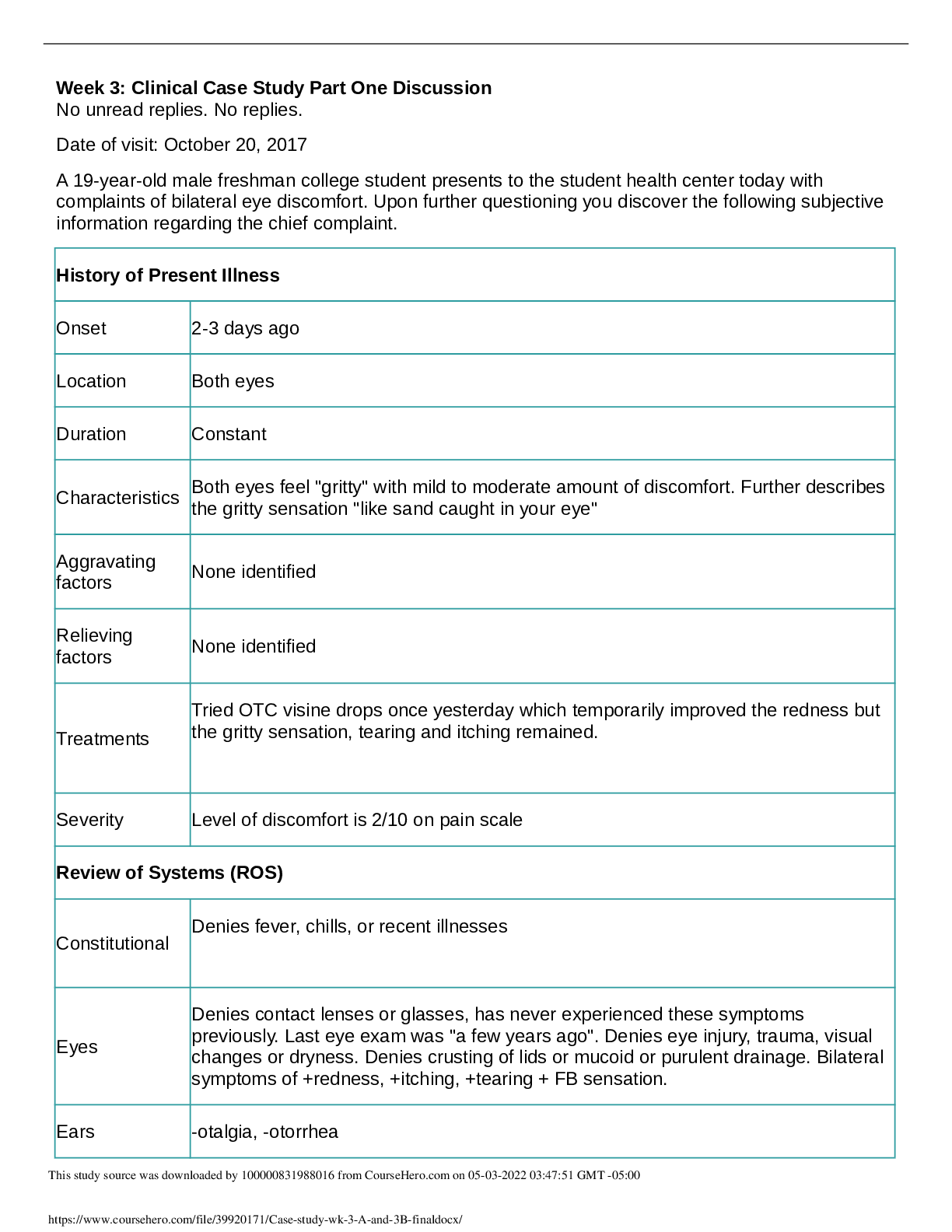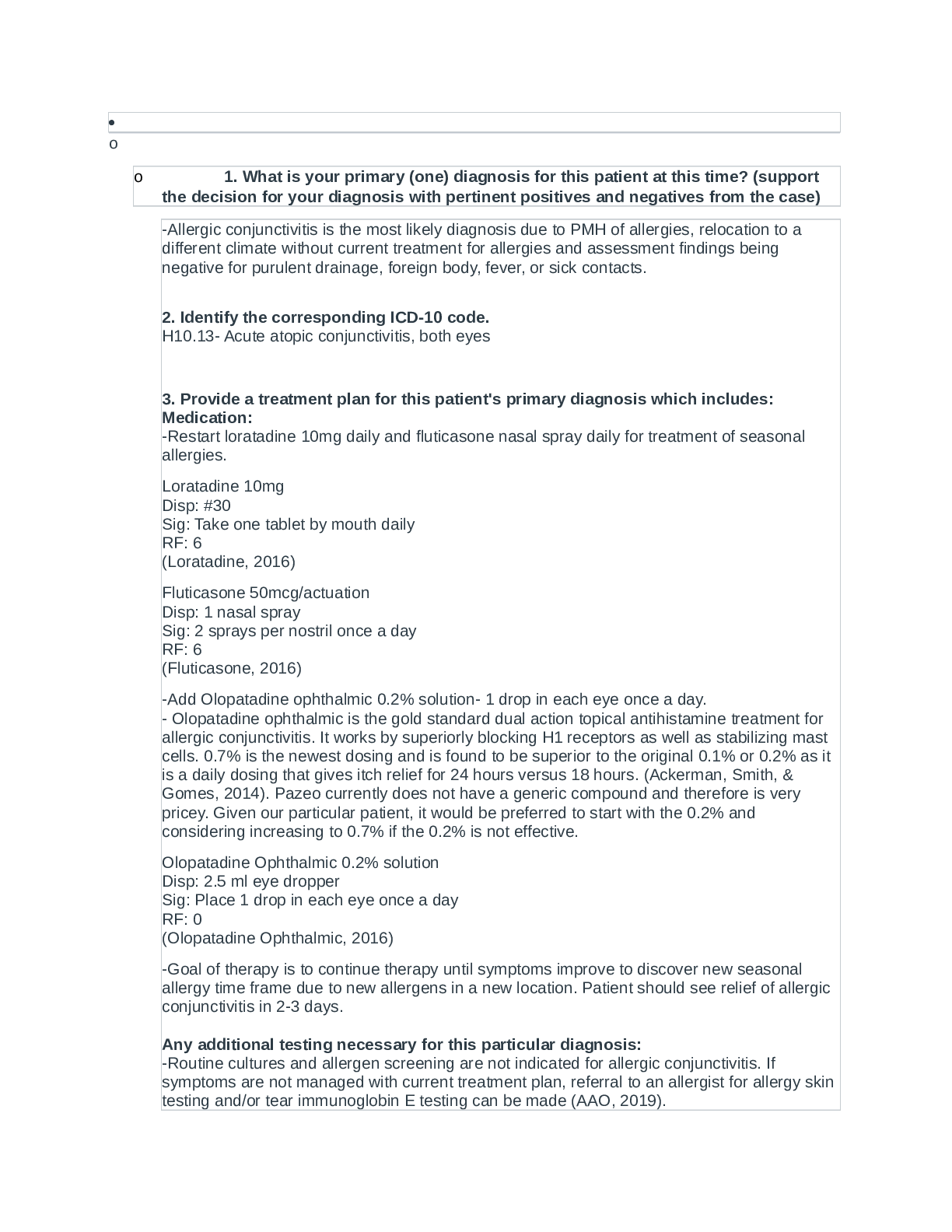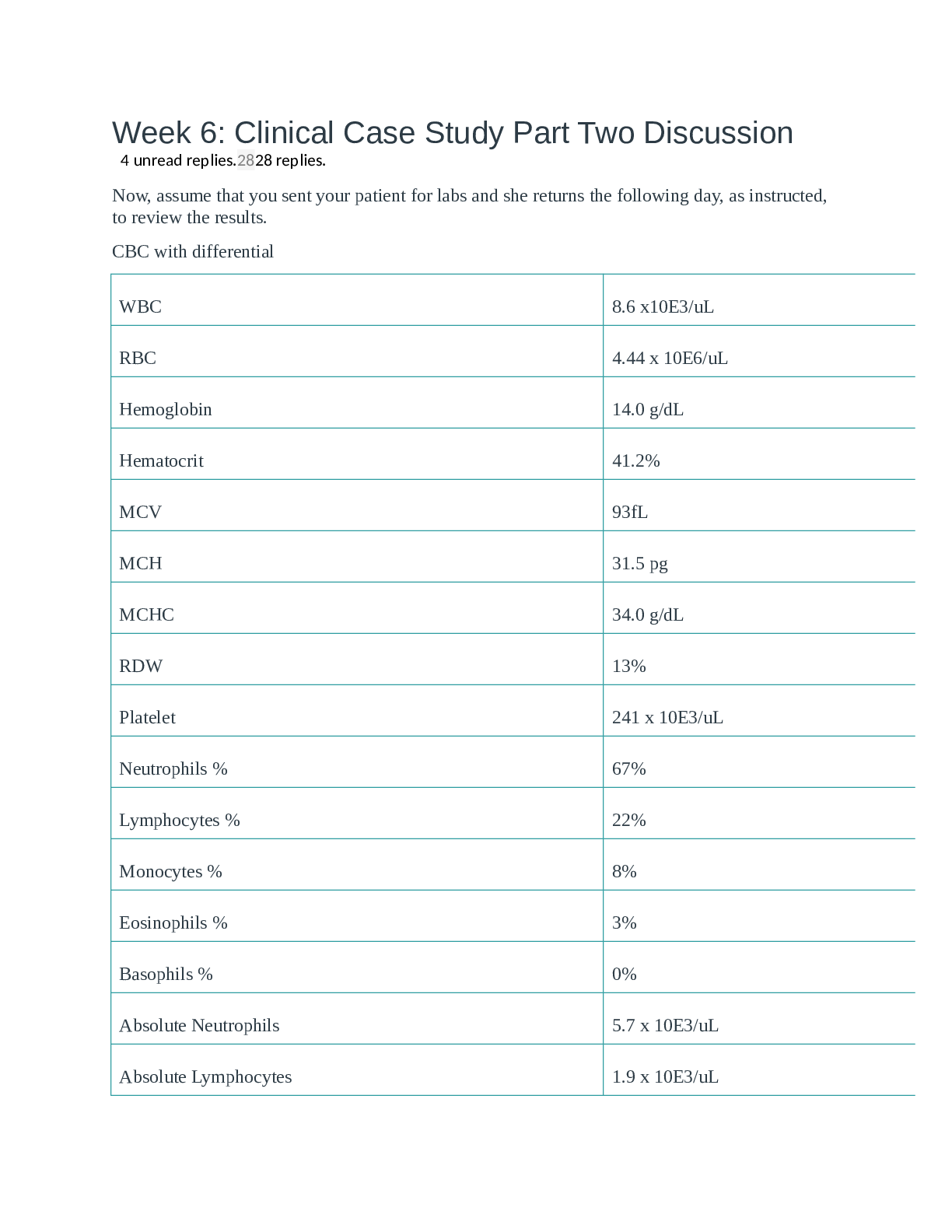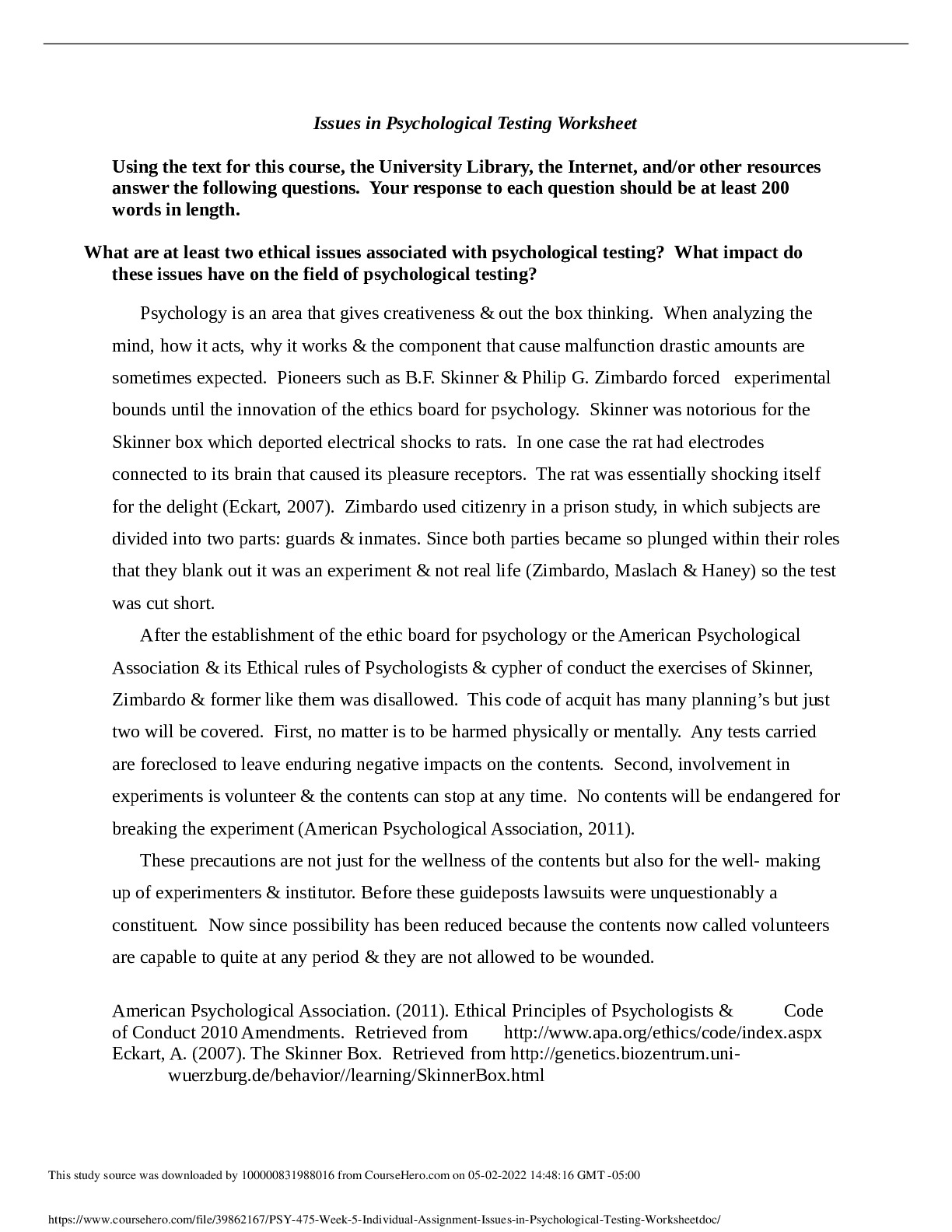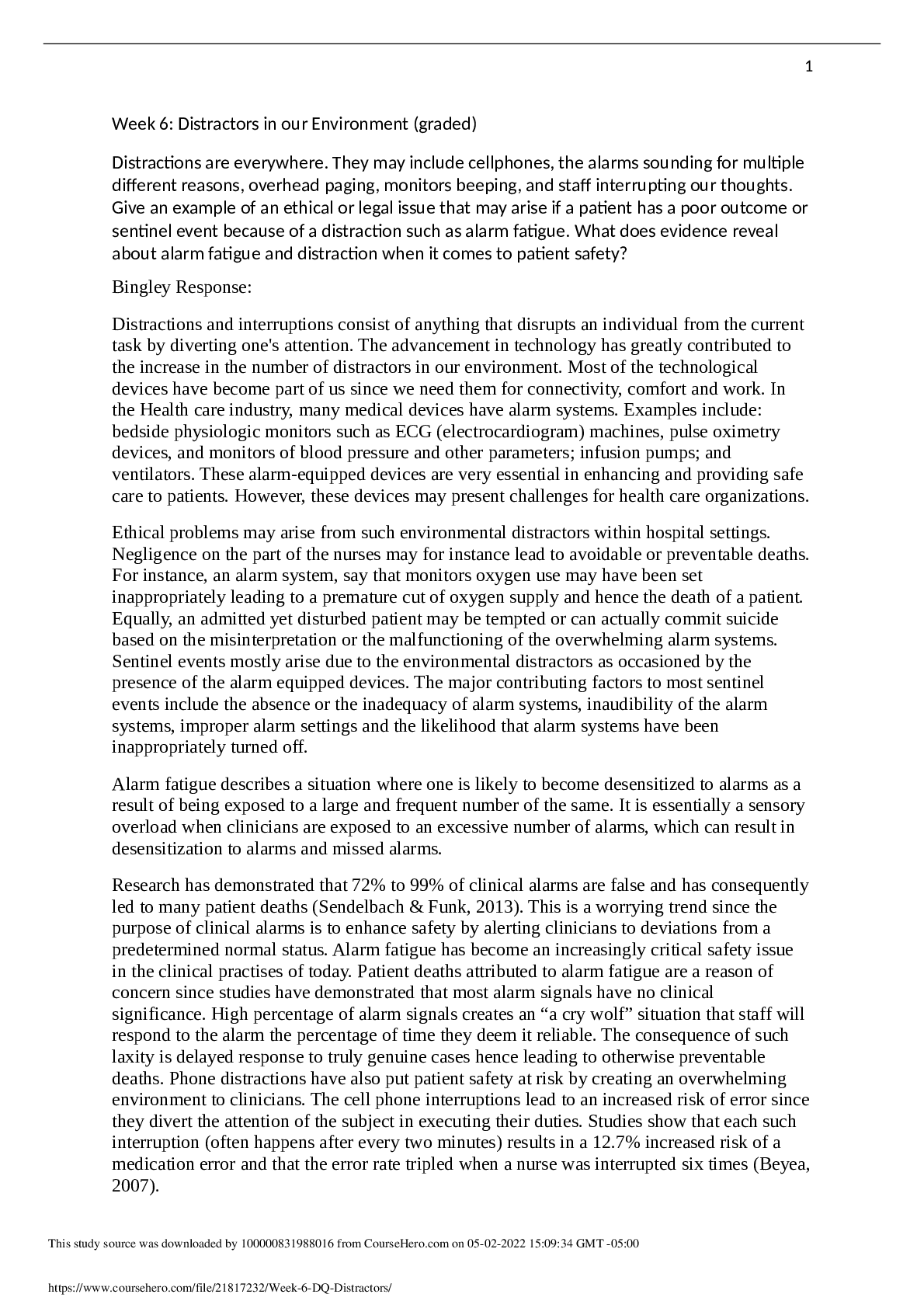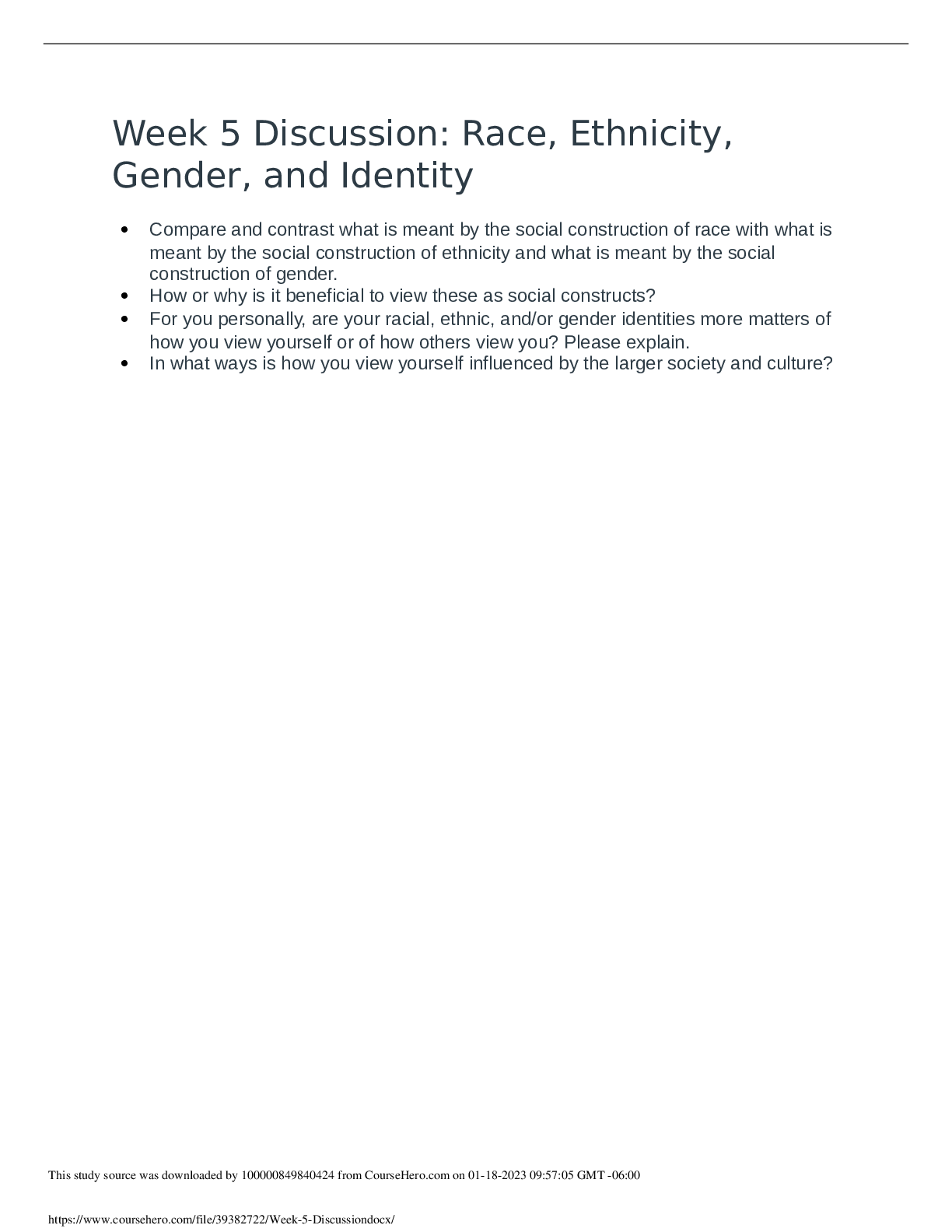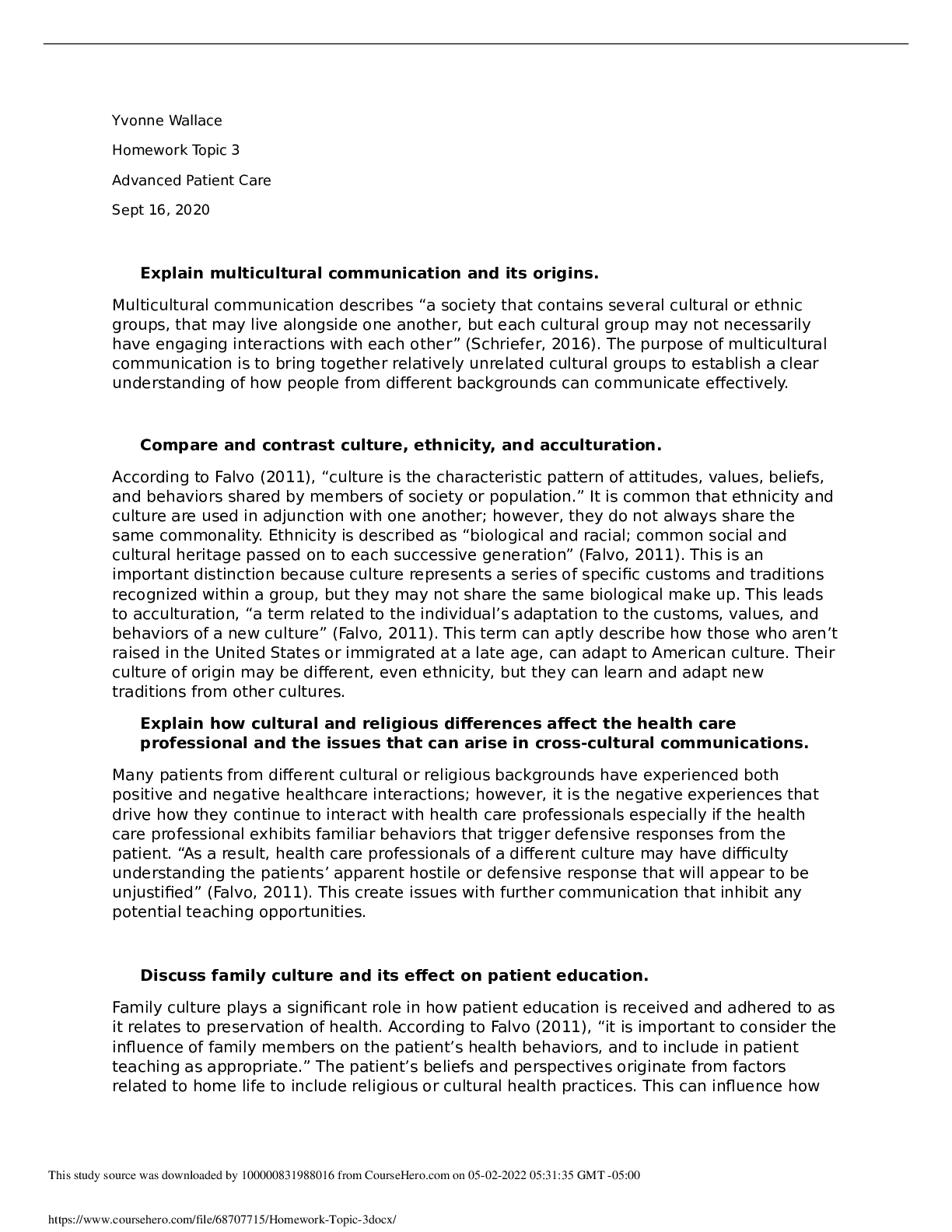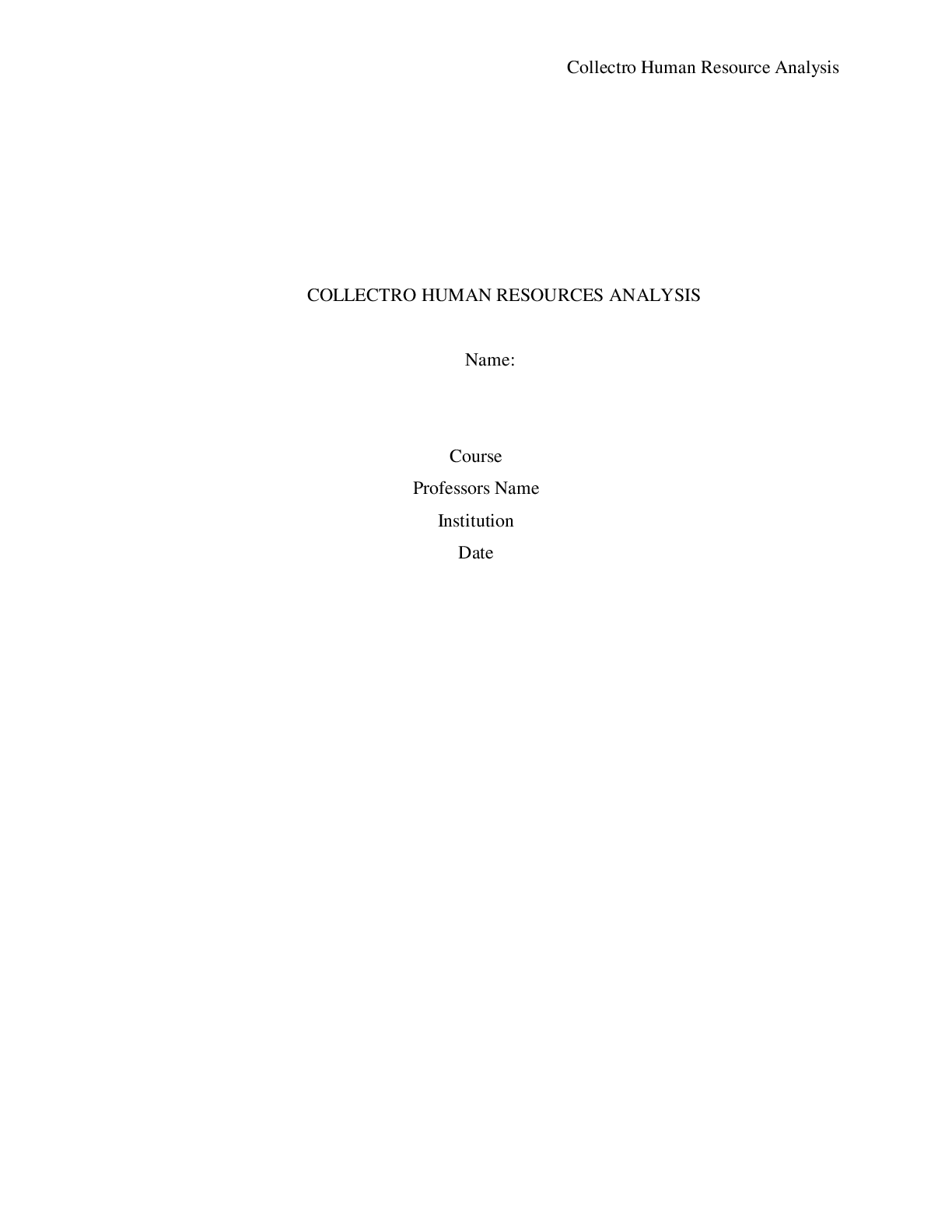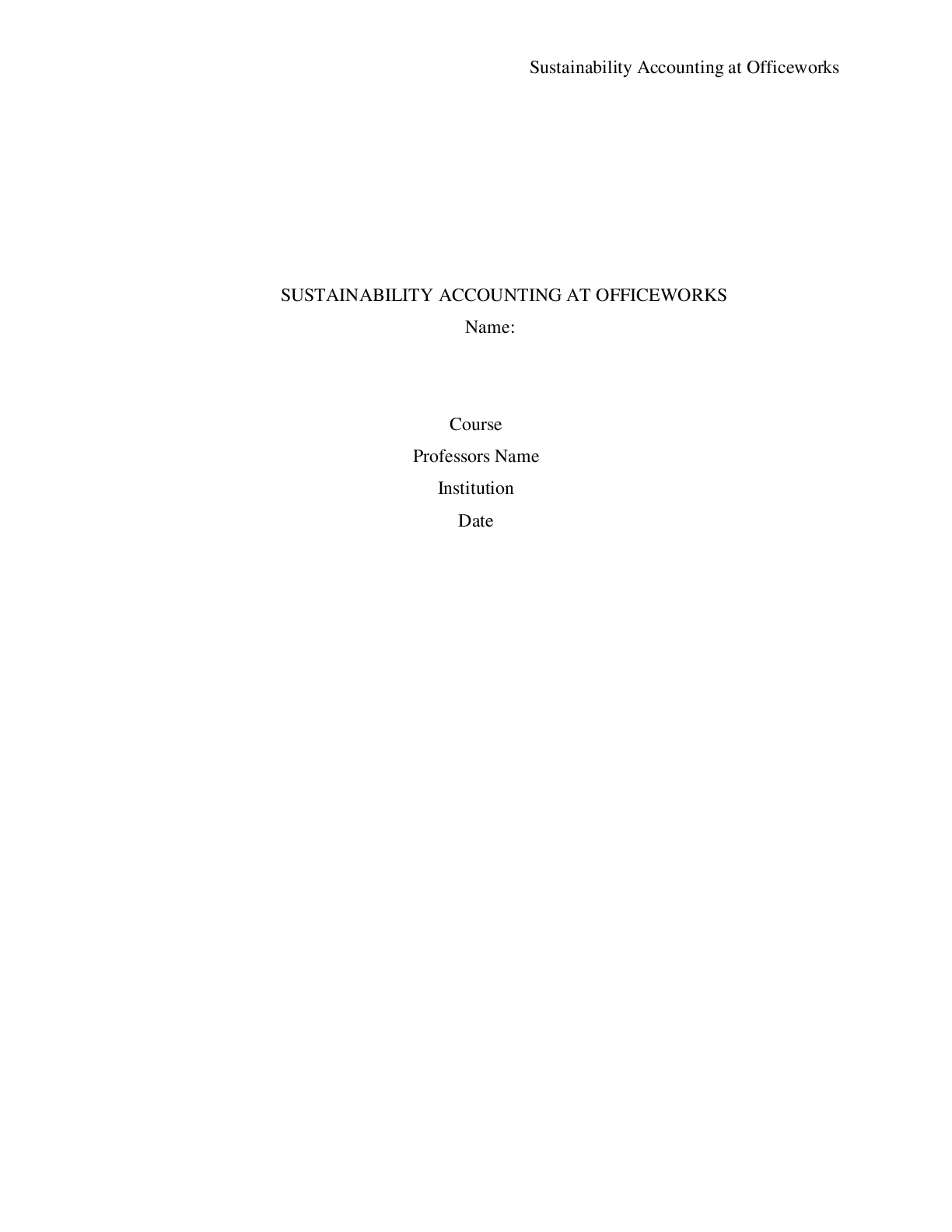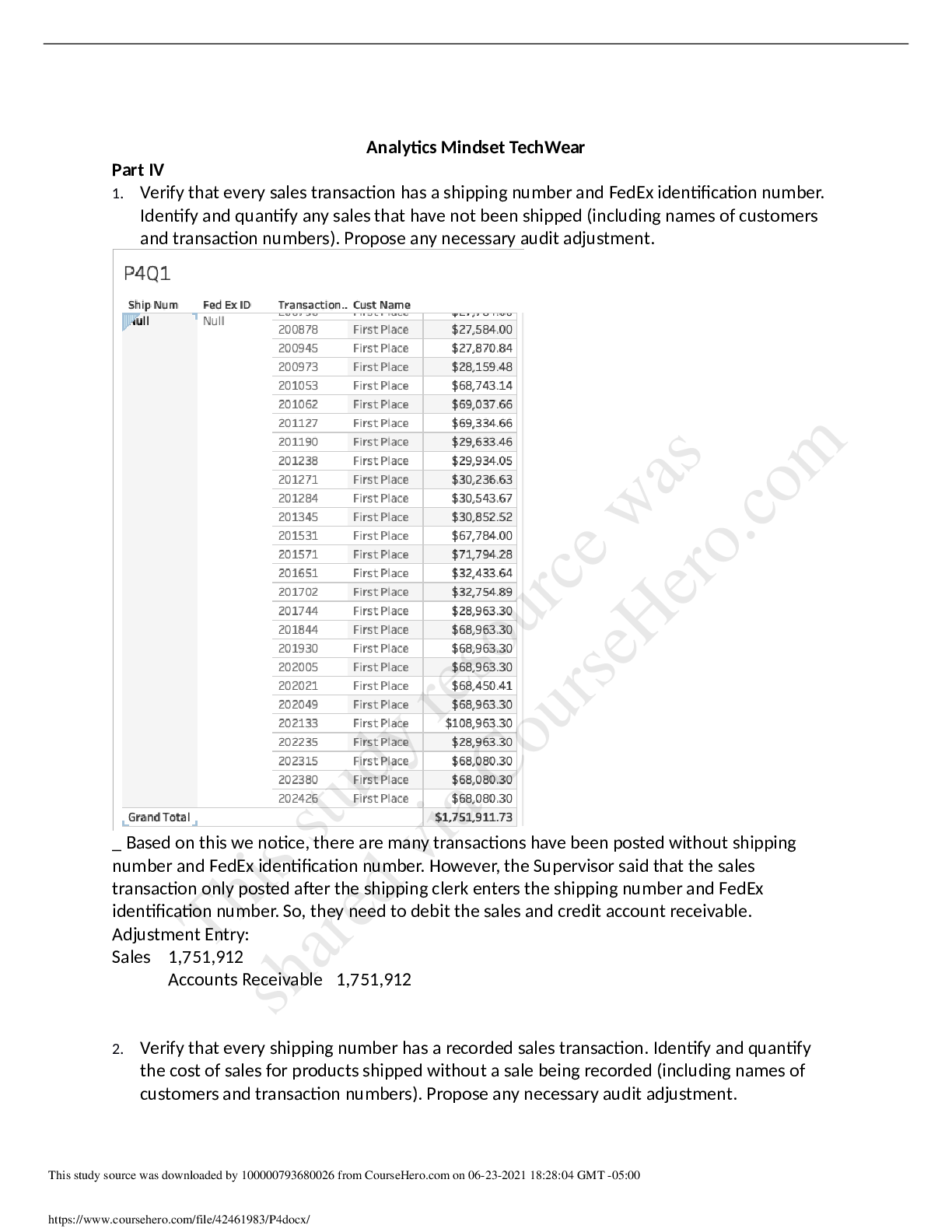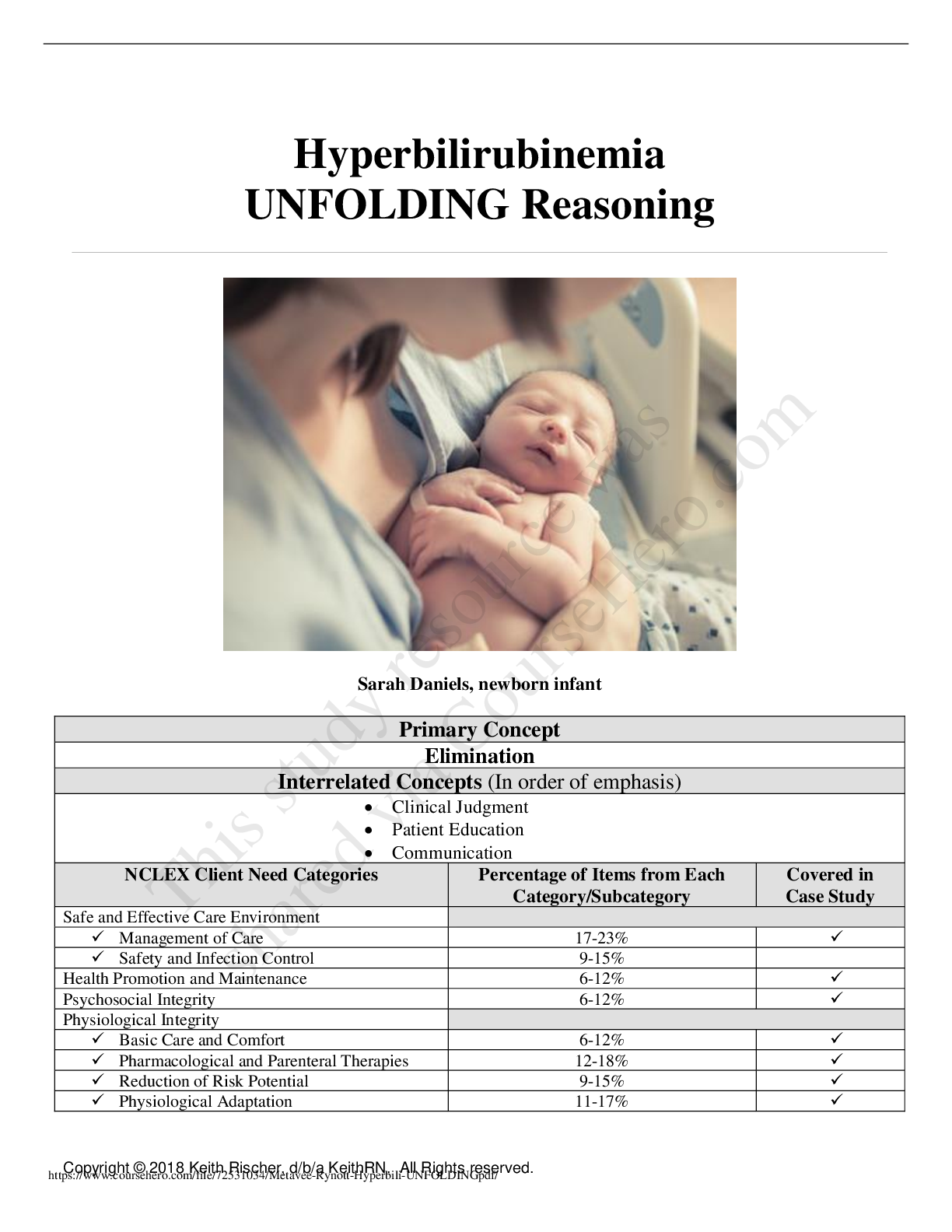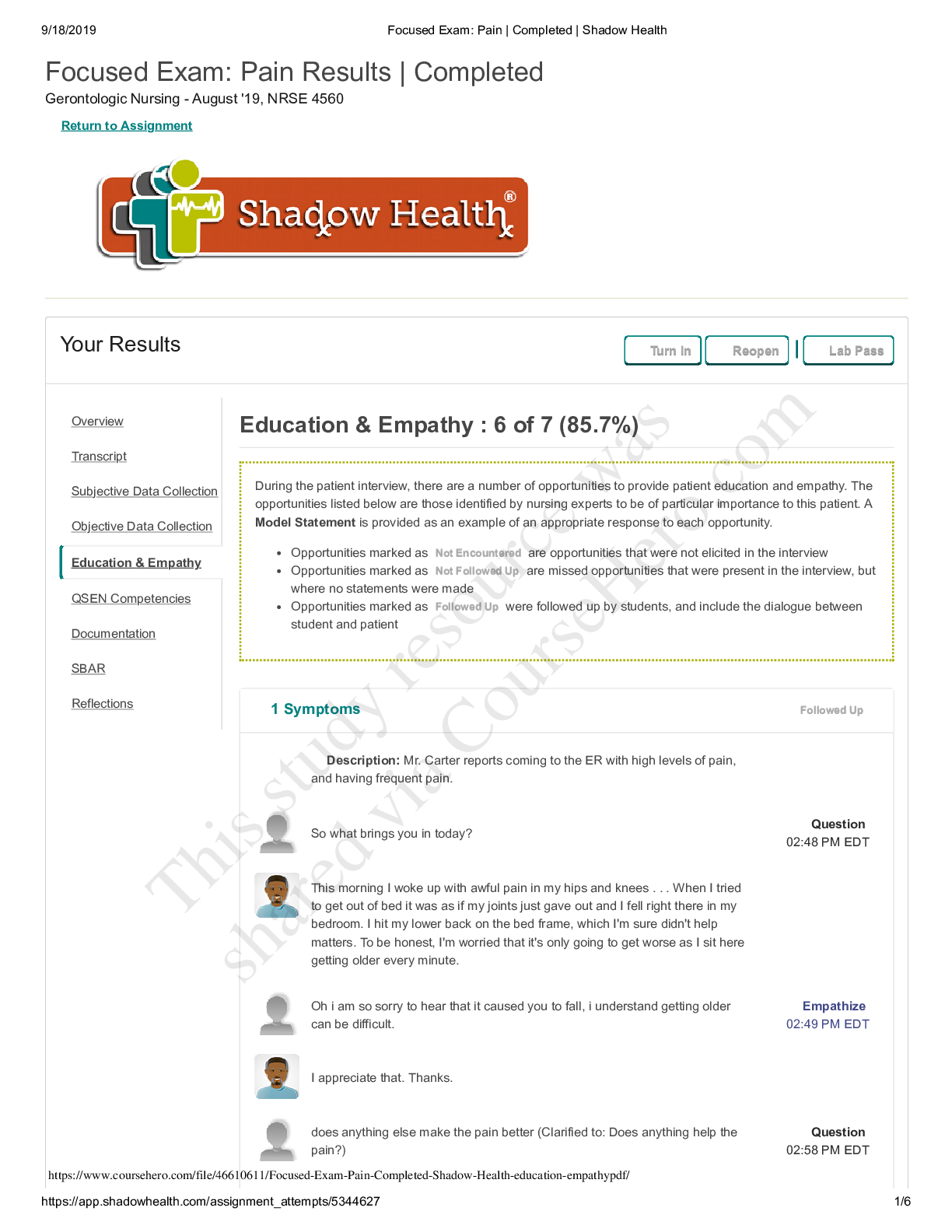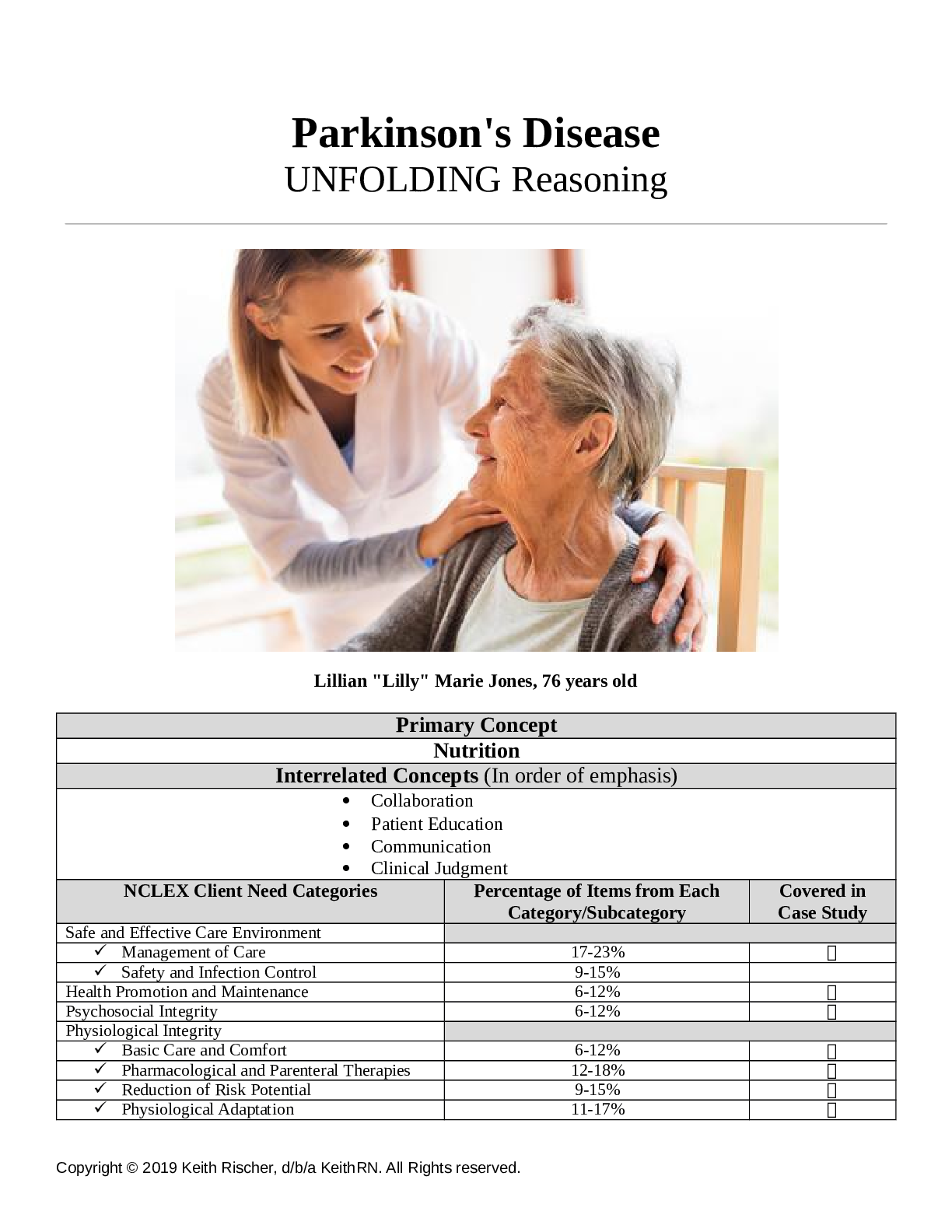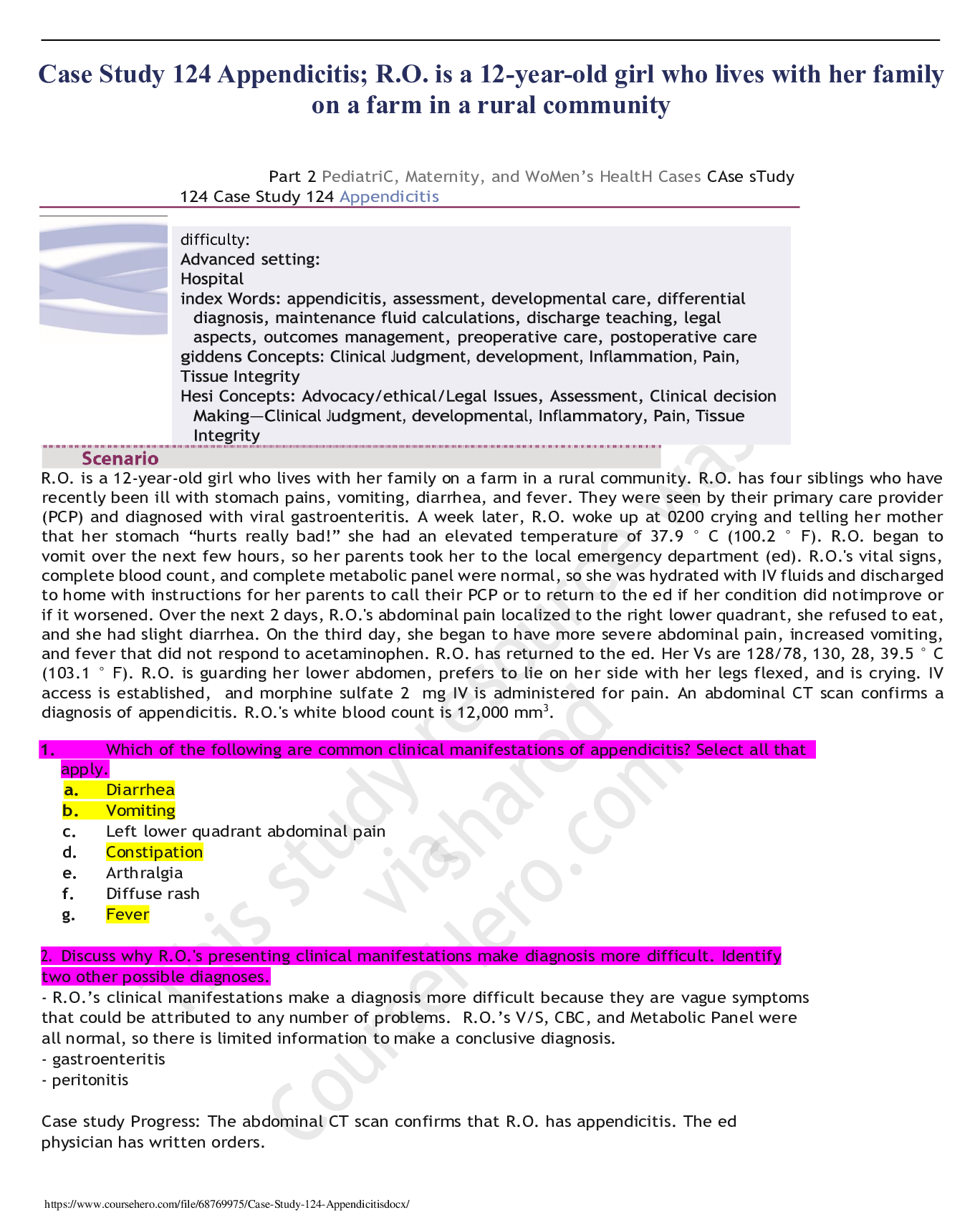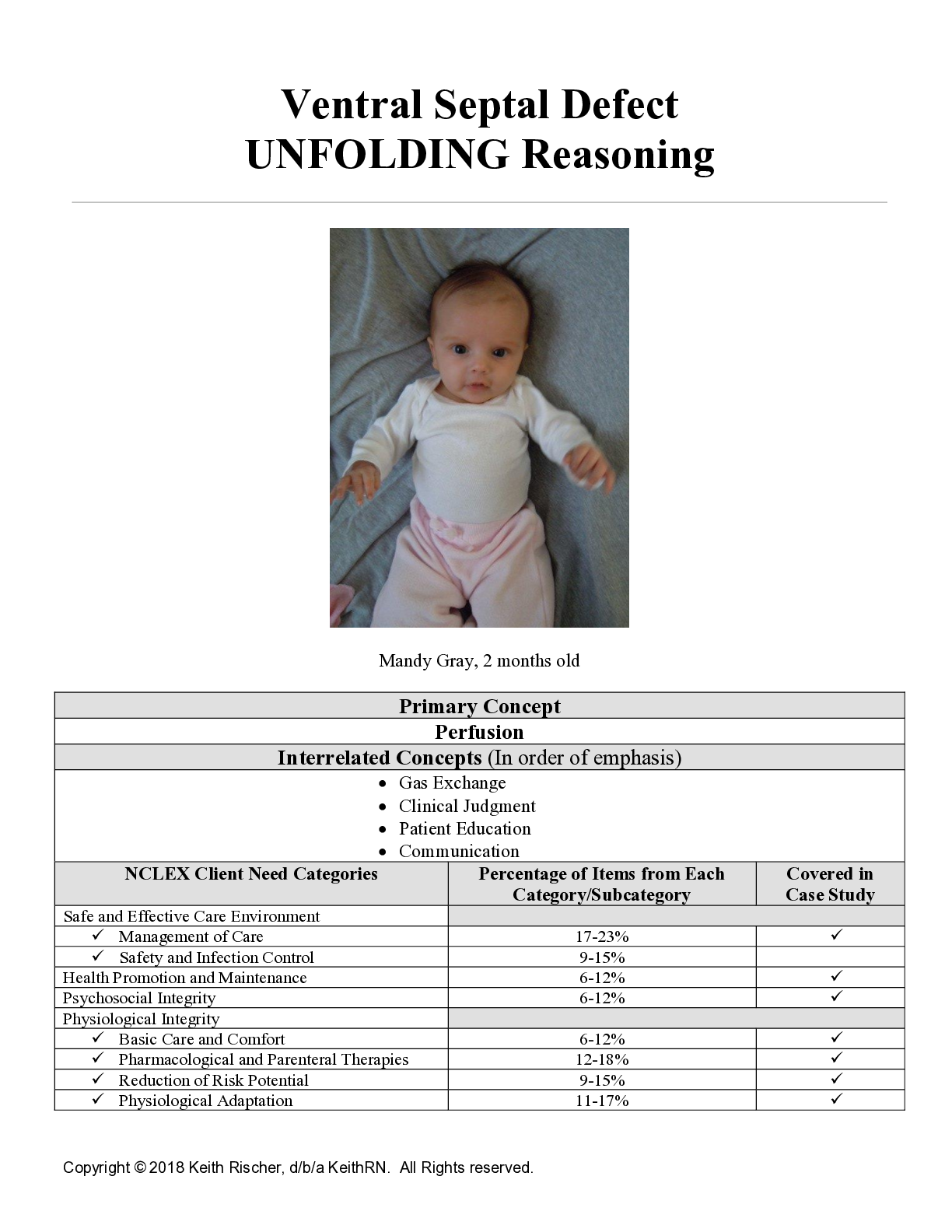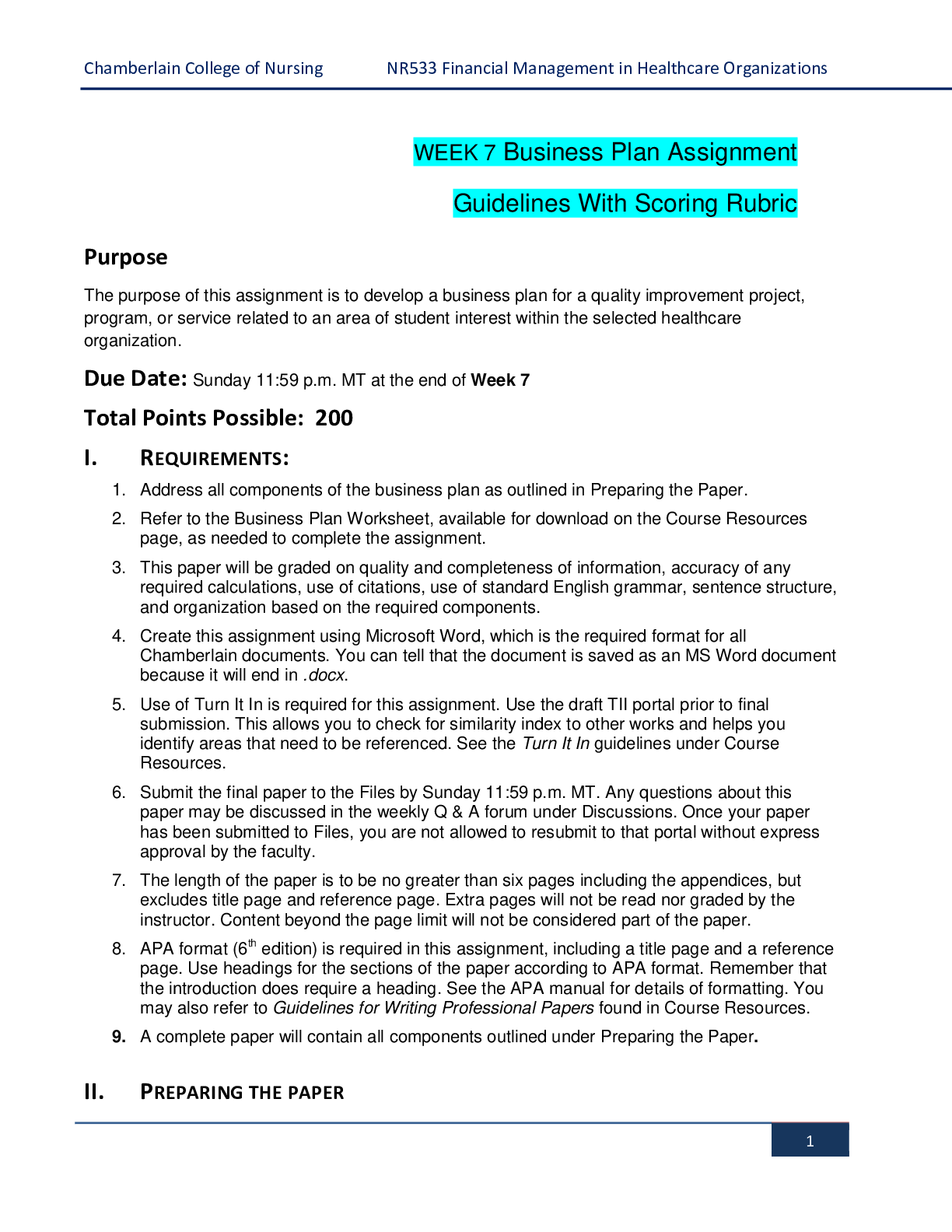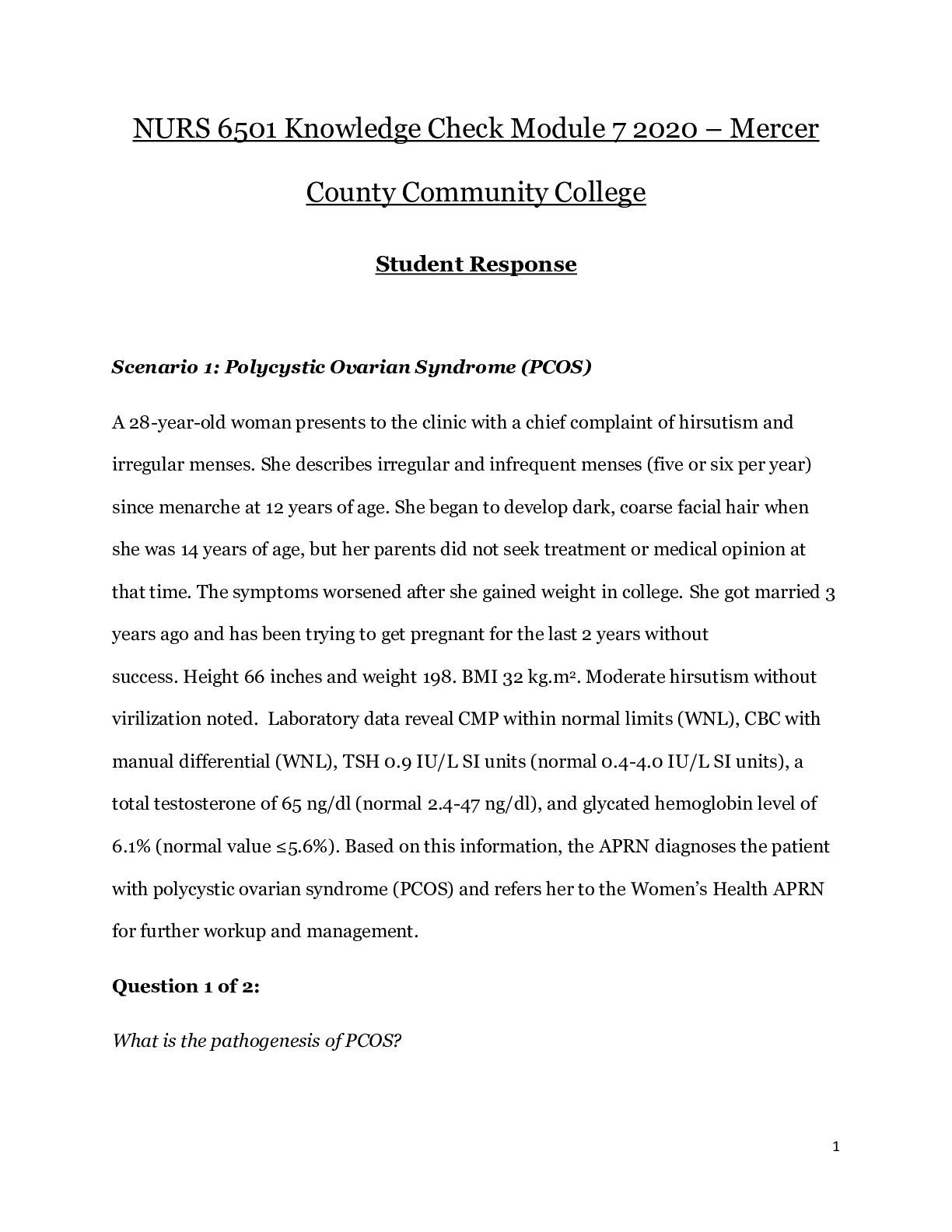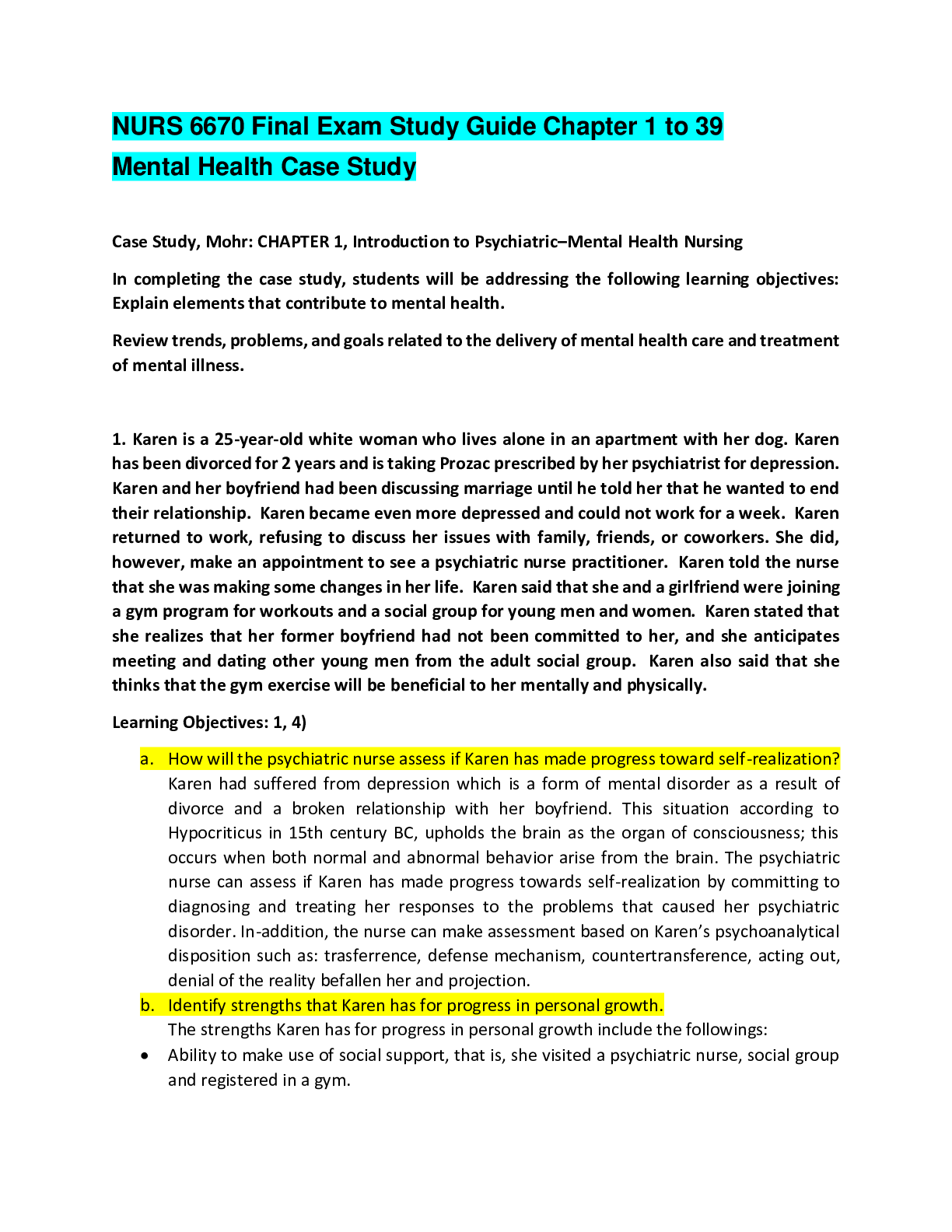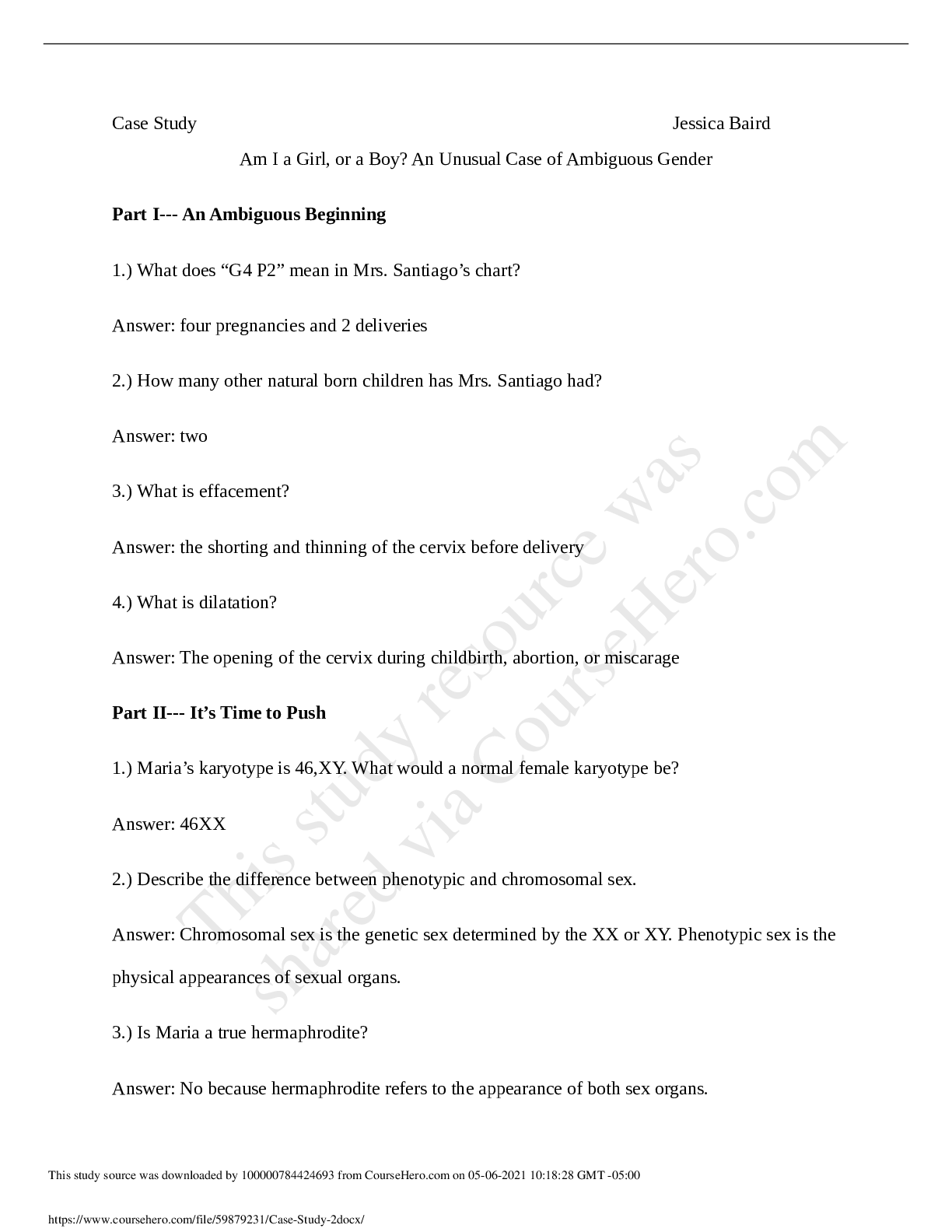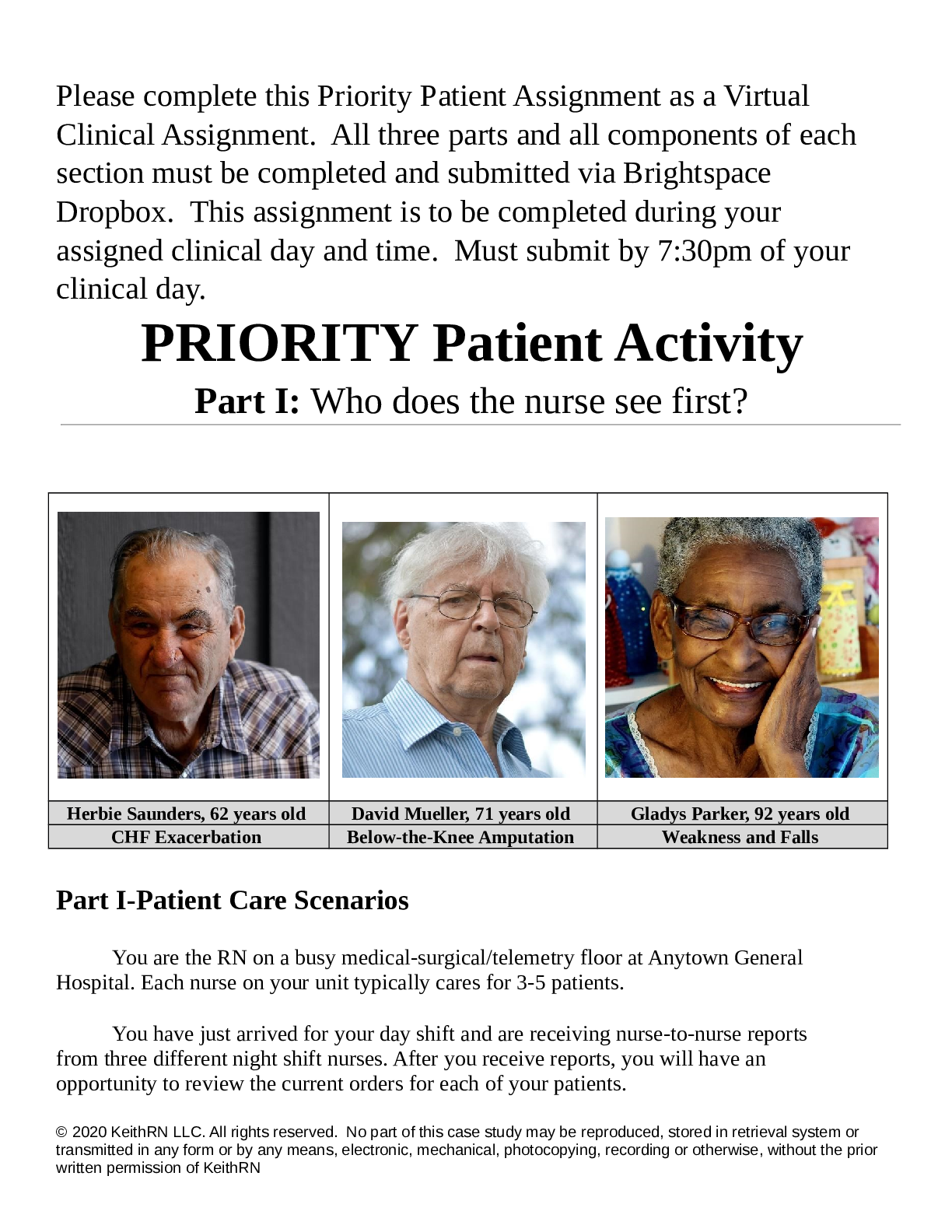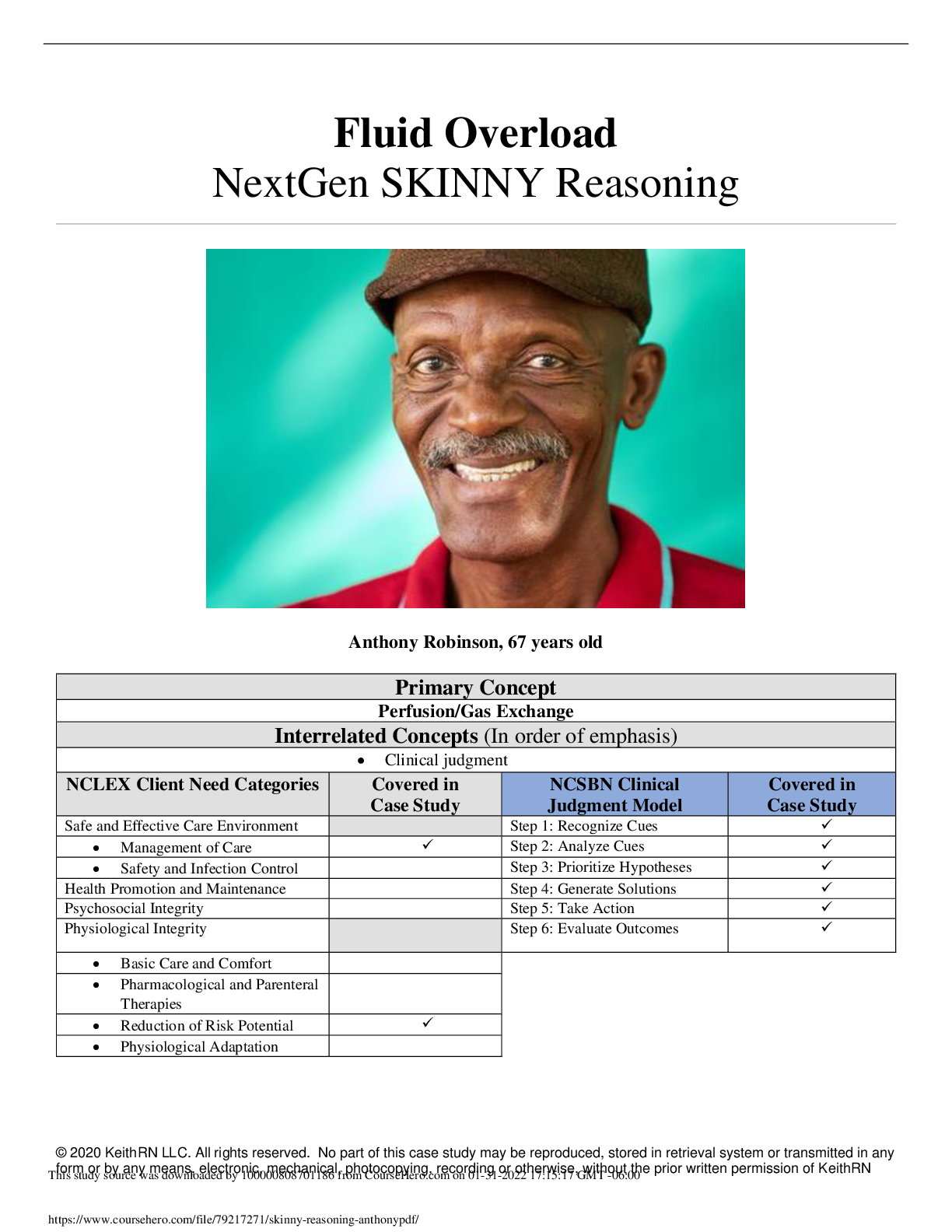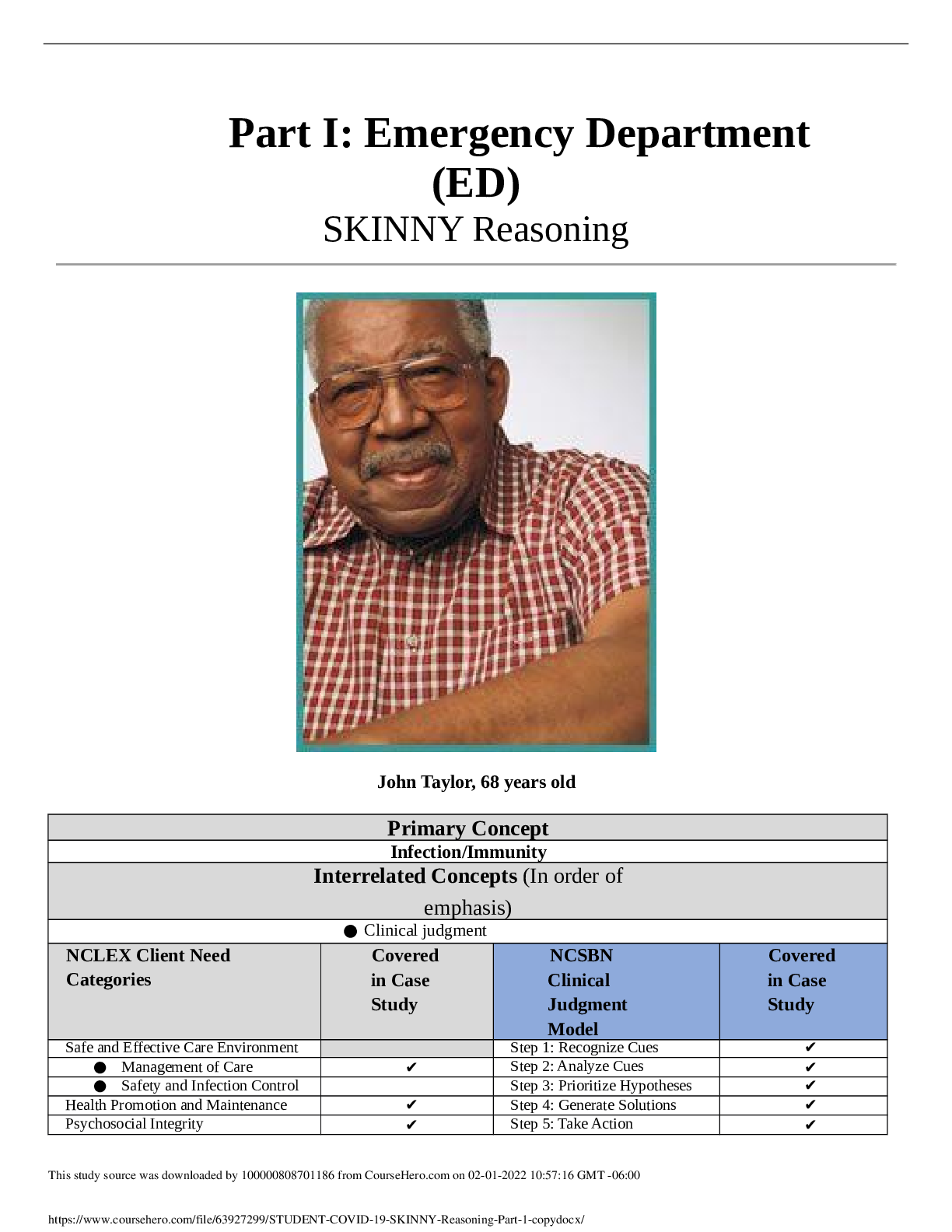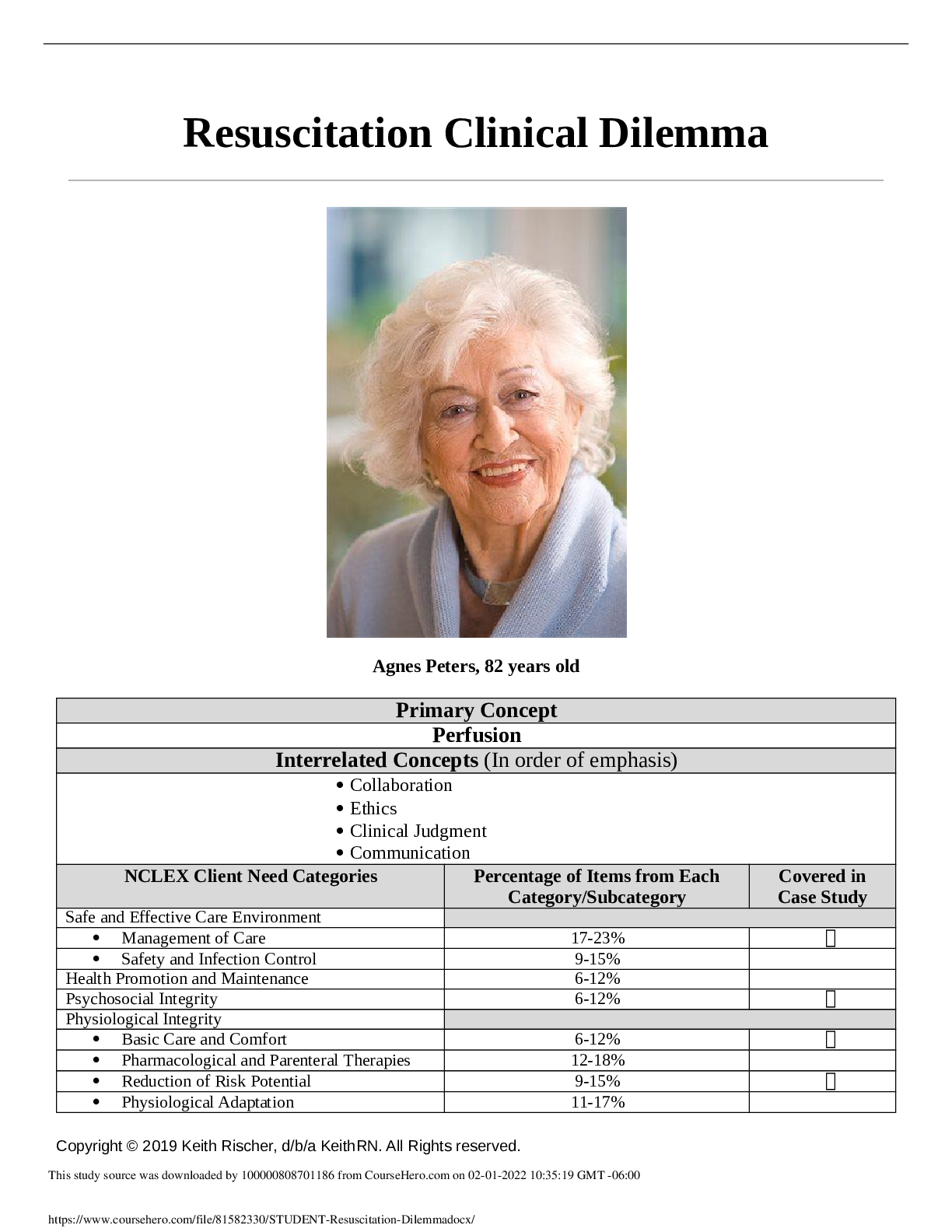*NURSING > CASE STUDY > GCU|HLT 306V Week 4 Topic 4 Homework Question and Answers (All)
GCU|HLT 306V Week 4 Topic 4 Homework Question and Answers
Document Content and Description Below
Write a short (50-100-word) paragraph response for each question. This assignment is to be submitted as a Microsoft Word document. 1. Define negotiation as it applies to patient education. 1. Negot... iation implies reaching a compromise between two persons. Although an uncommon idea in healthcare, finding a middle ground while discussing solutions - considering patients ability, willingness, and acceptability of set goals, in order to come upon agreed routes to reach set goals. Making recommendations that the patient is unable or unwilling to follow does no good for anyone. 2. Explain how the change in the patient's status through the years has affected patient education. 1. In the past healthcare professionals kept back information for reasons such as: they don’t have the ability to understand, it’d make the patient worry needlessly, or they don’t want to know all the information. Healthcare professionals even felt that their role would be diminished. 2. With the increase of information through Internet, media, and other sources, healthcare professional’s final authority was challenged and did diminish. In 1990’s it was realized, through research, that patients did want more information, and with more information were more satisfied with care that provided adequate information. 3. List the pros and cons of negotiation. 1. Pros of negotiation would be that the healthcare professional can find out more about their patient such as their concerns, values, barriers in ADL’s that may not have come up during a regular conversation. The patient will also feel heard, they will be better inclined towards the healthcare professional, trusting, and provide good reviews. 2. Not being the answer to adherence, there are cons of negotiations. Conflicts in the form of stalemates, coercion, or just rejection may still occur. Sometimes patients just refuse to follow directions, such as giving themselves insulin shots. Patients refuse to understand information given when they have already decided for themselves, they want a specific medication for a specific symptom, such as valium for anxiety. 4. Describe the general conditions that would be included in a patient contract. 1. The process of contracting a patient is based on a theory of learning. It focuses on increasing patients’ skills and abilities to carry out the recommendations, all the while focusing on their strengths instead of weaknesses and setting small attainable goals instead of huge tasks. Instead of instructing losing 100lb through strict diet & exercise, lose 10 by way of drinking more water and reducing soda, and incorporating walking. 5. Discuss old age and the baby boomer. 1. Old age can be relative. There is no correct definition of what constitutes an older adult since someone at 80 years old can be and feel healthier than a 60-year-old. Old age can be determined by a combination of psychological, cultural, societal, physical, chronological, and functional factors. 2. Baby boomers are those people born after WWII. When men came back from war and the birth rate spiked, producing baby boomers born between 1946 and 1964. These people are now 74-56 years old. Because of such a large range some may not yet consider themselves older adults. 6. List several generational, religious, and cultural differences between the 30-year-old health care professional and the elderly patient. 1. The generational gap can be evident in how the 30-year-old & the elderly patient communicates, how they prioritize their health & family & other responsibilities, how morals are understood, and how cultural differences are viewed and responded to. Utilizing a lot of slang or medical jargon could be perceived as a lack of respect by the elderly patient. Those who are of a different culture and religion may be feeling that This study source was downloaded by 100000831988016 from CourseHero.com on 05-02-2022 05:38:07 GMT -05:00 https://www.coursehero.com/file/57306781/Homework-Topic-4-Eleonora-Reznikovadocx/ their beliefs and culture are being ignored if not addressed by the younger healthcare professional. 7. Explain some of the barriers to patient education of the elderly and discuss their special needs. 1. To name a few, cultural differences, generational differences, stereotypes, and attitudes can be barriers to effective patient teaching. Positive instead of negative attitudes towards the aging population can facilitate effective teaching and can be done by viewing older people as individuals with unique values, preferences, and beliefs just like any younger person who needs individualized care & teaching. We all have stereotypes but as professionals we need to be aware of them, as they diminish value and result in compartmentalization of patients rather then seeing them as individuals. Chronic illnesses, medications, and sensory changes are also barriers to which we need to pay attention and provide helpful tools and the bare essentials such as closing the door to minim [Show More]
Last updated: 1 year ago
Preview 1 out of 2 pages
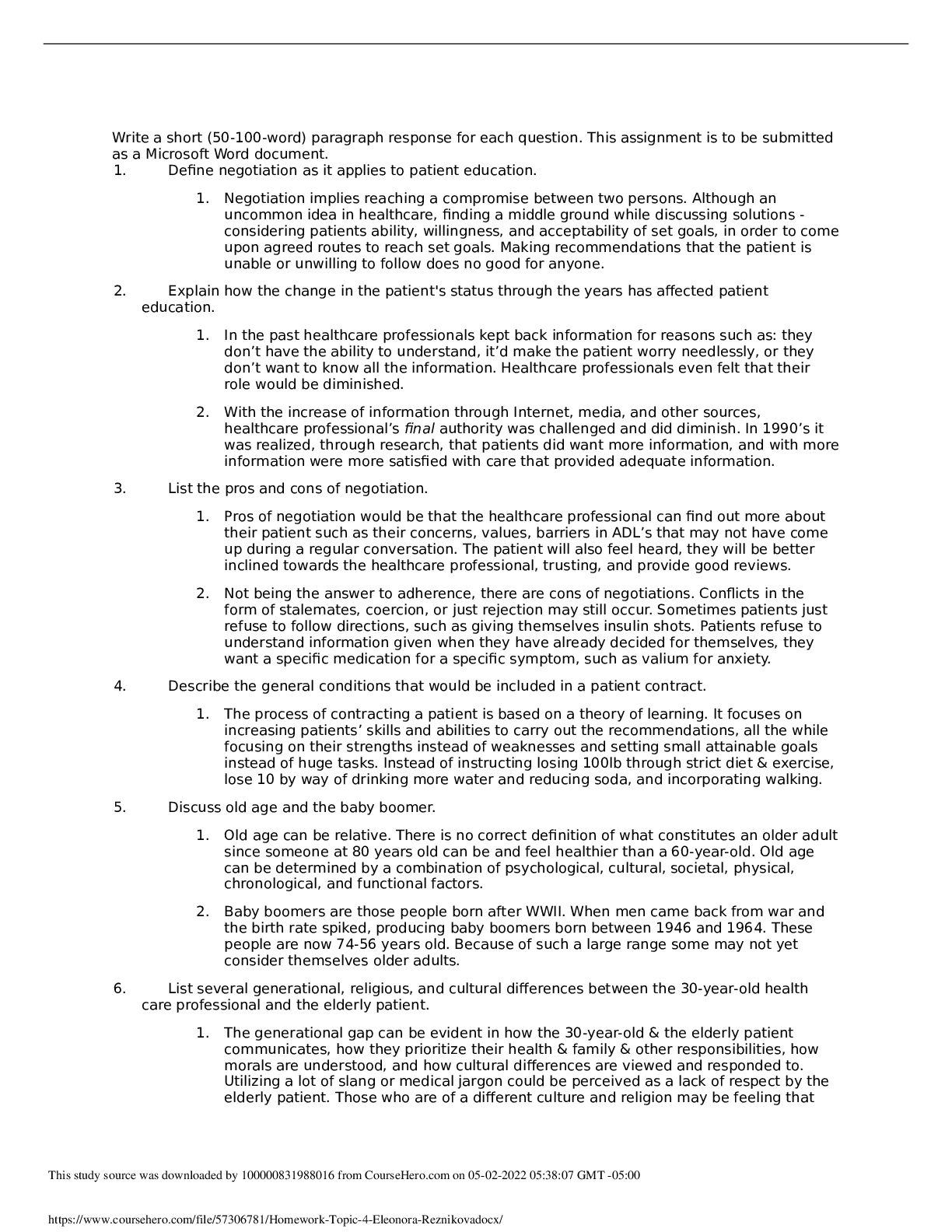
Reviews( 0 )
Document information
Connected school, study & course
About the document
Uploaded On
May 02, 2022
Number of pages
2
Written in
Additional information
This document has been written for:
Uploaded
May 02, 2022
Downloads
0
Views
57

